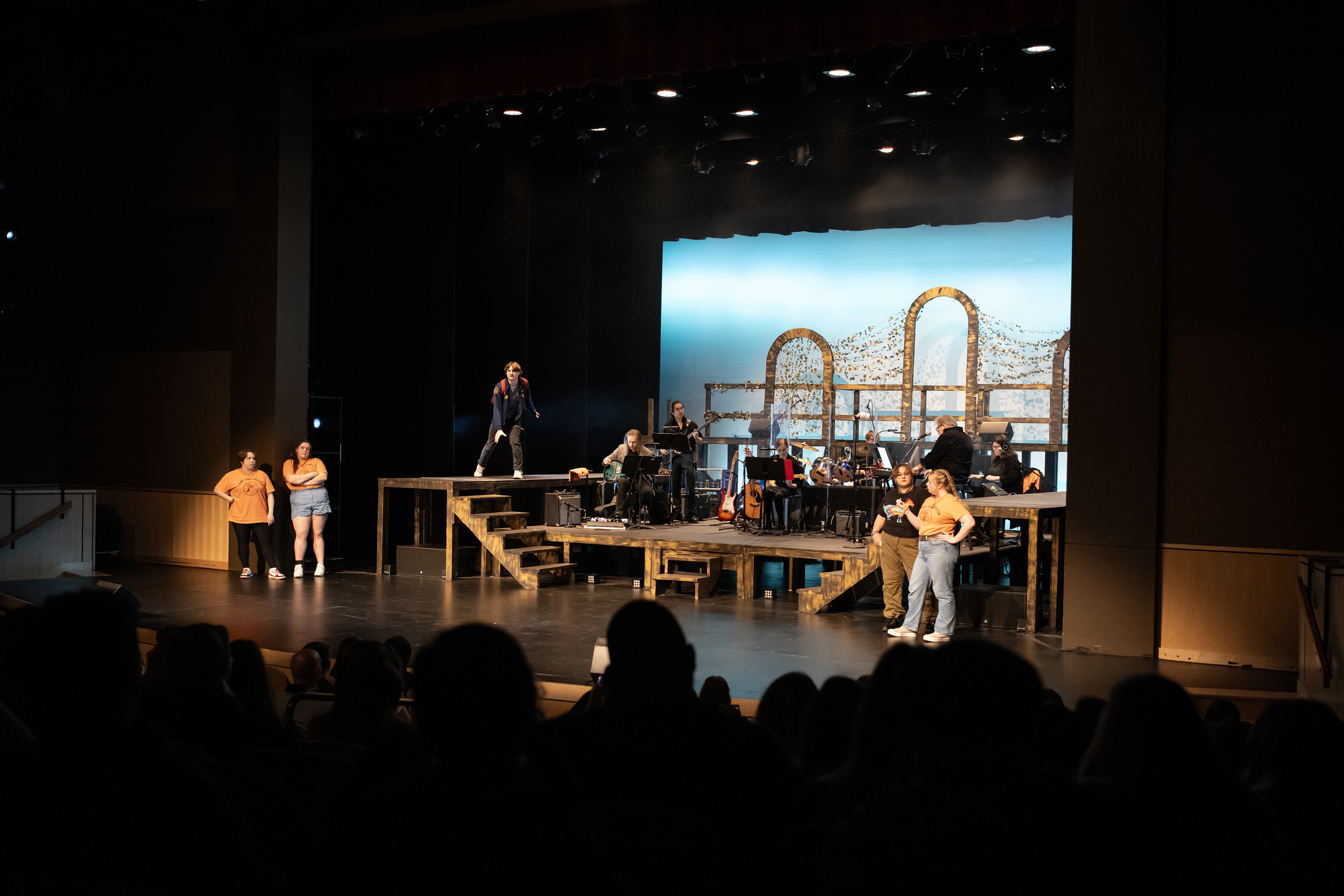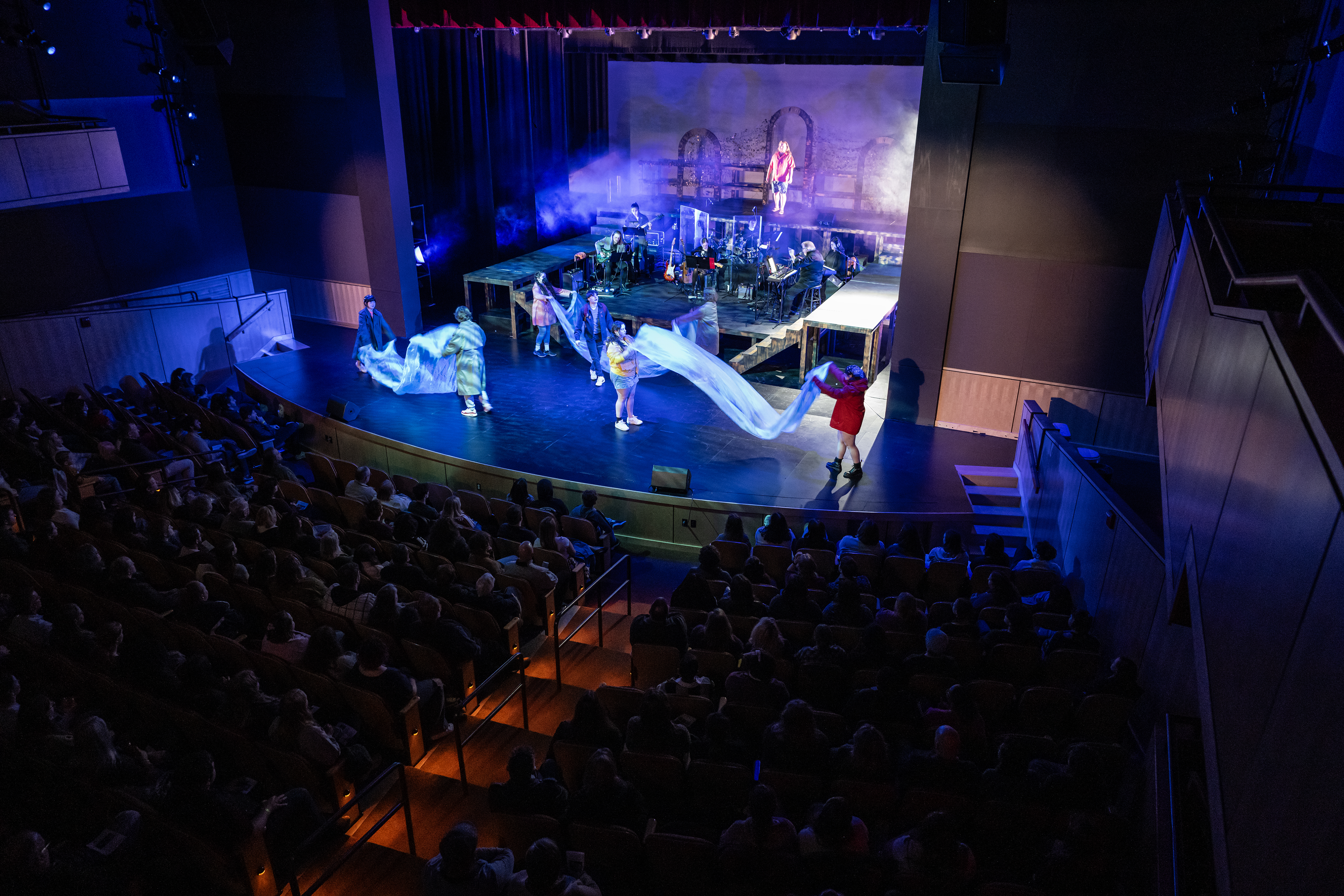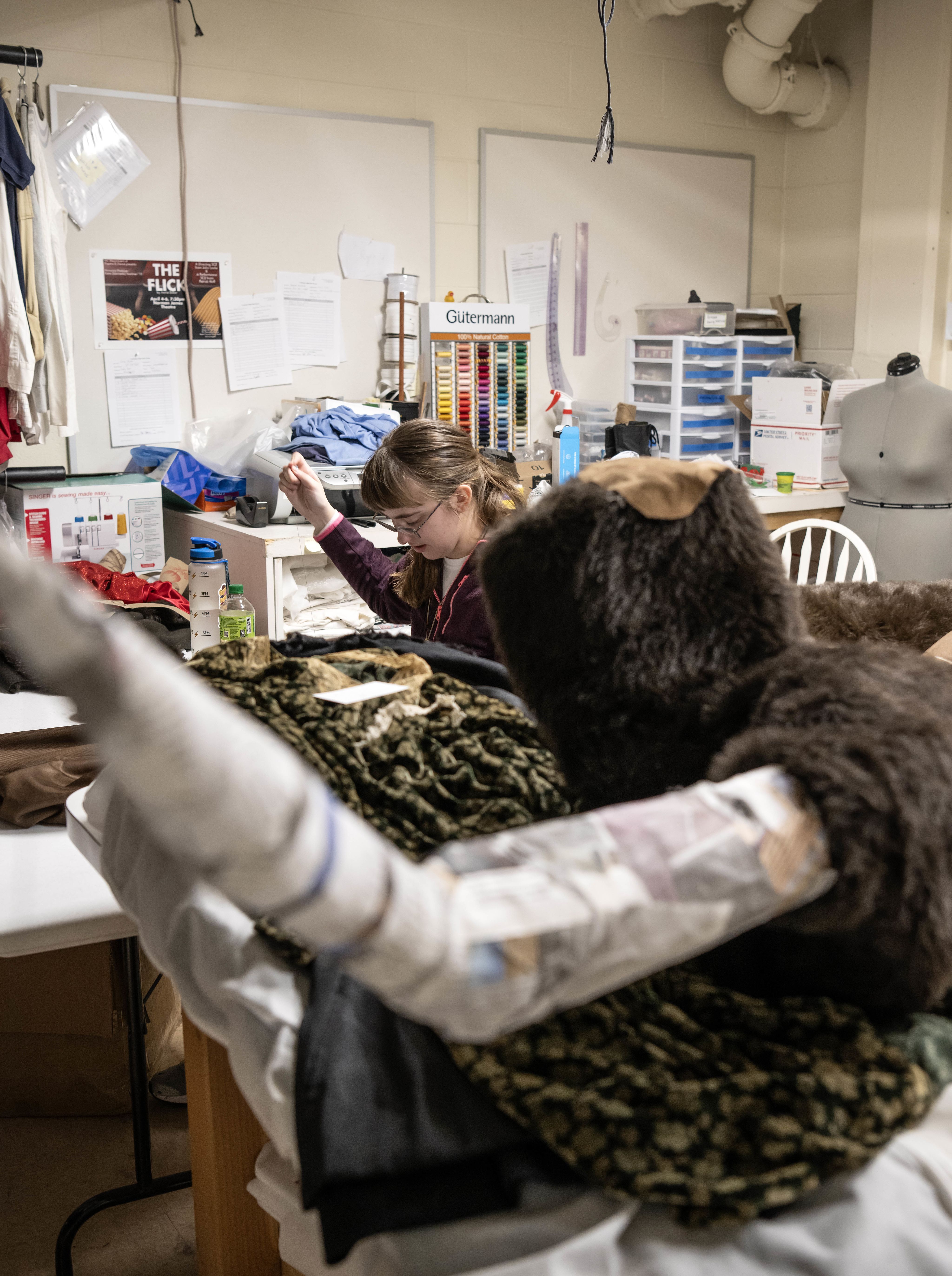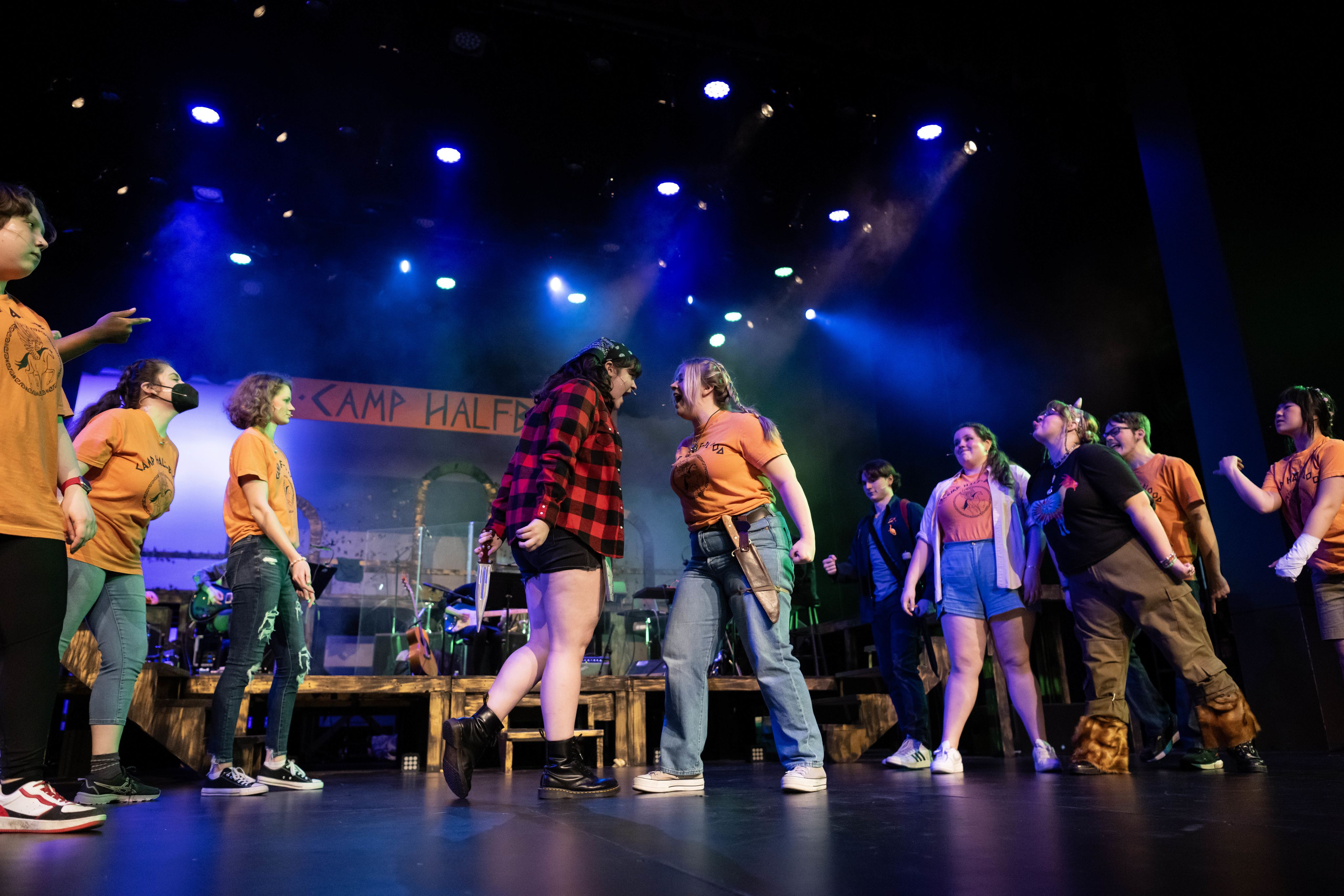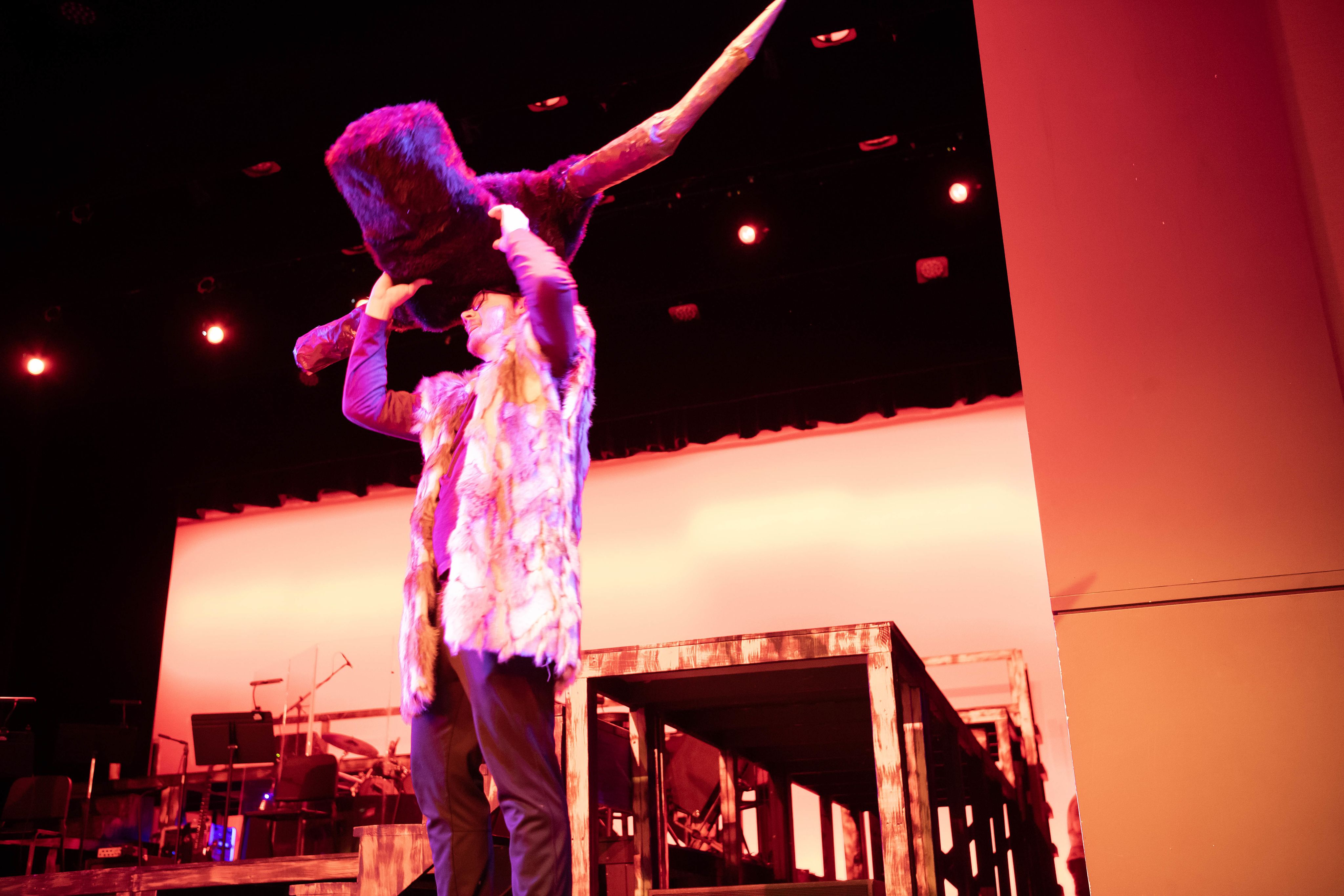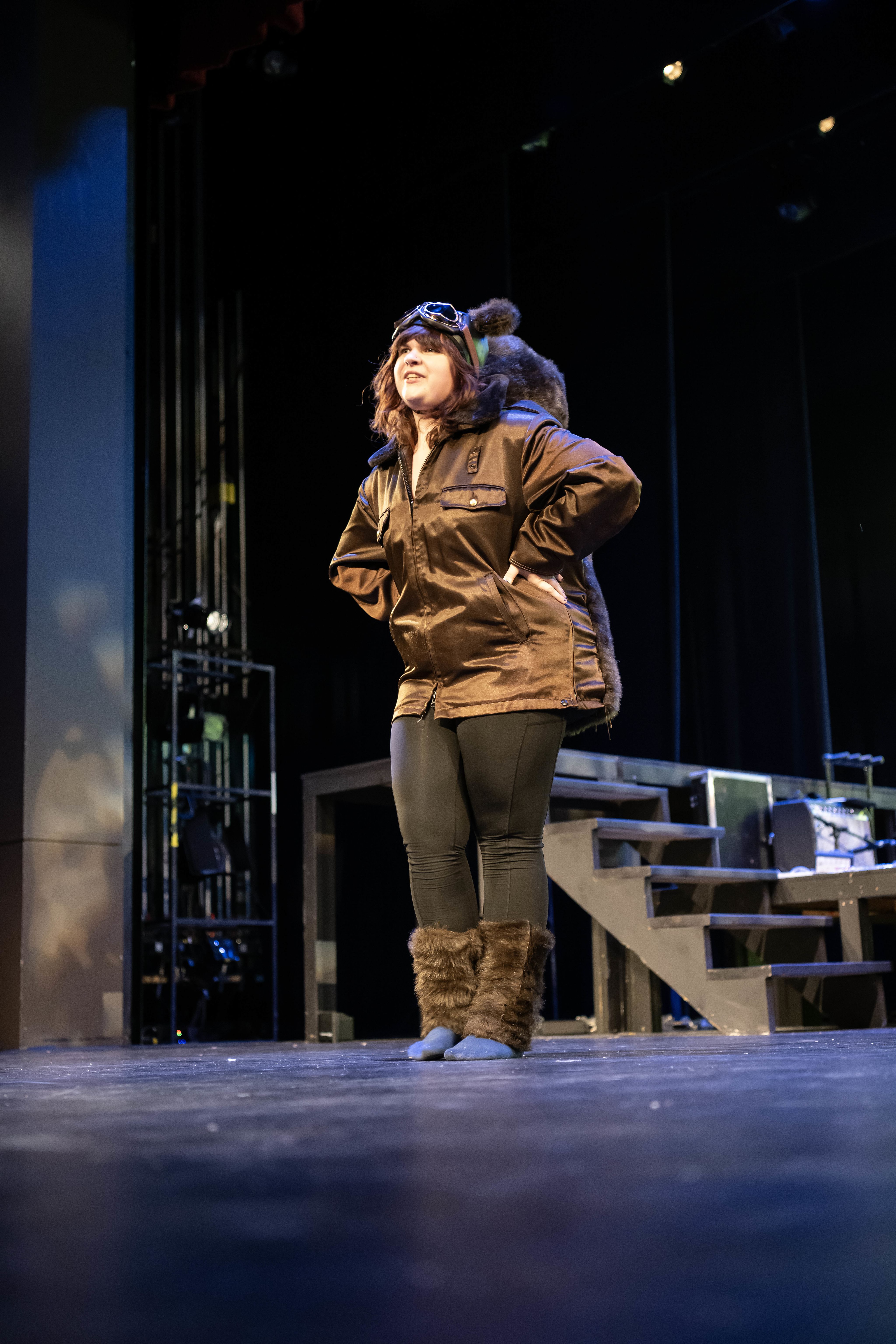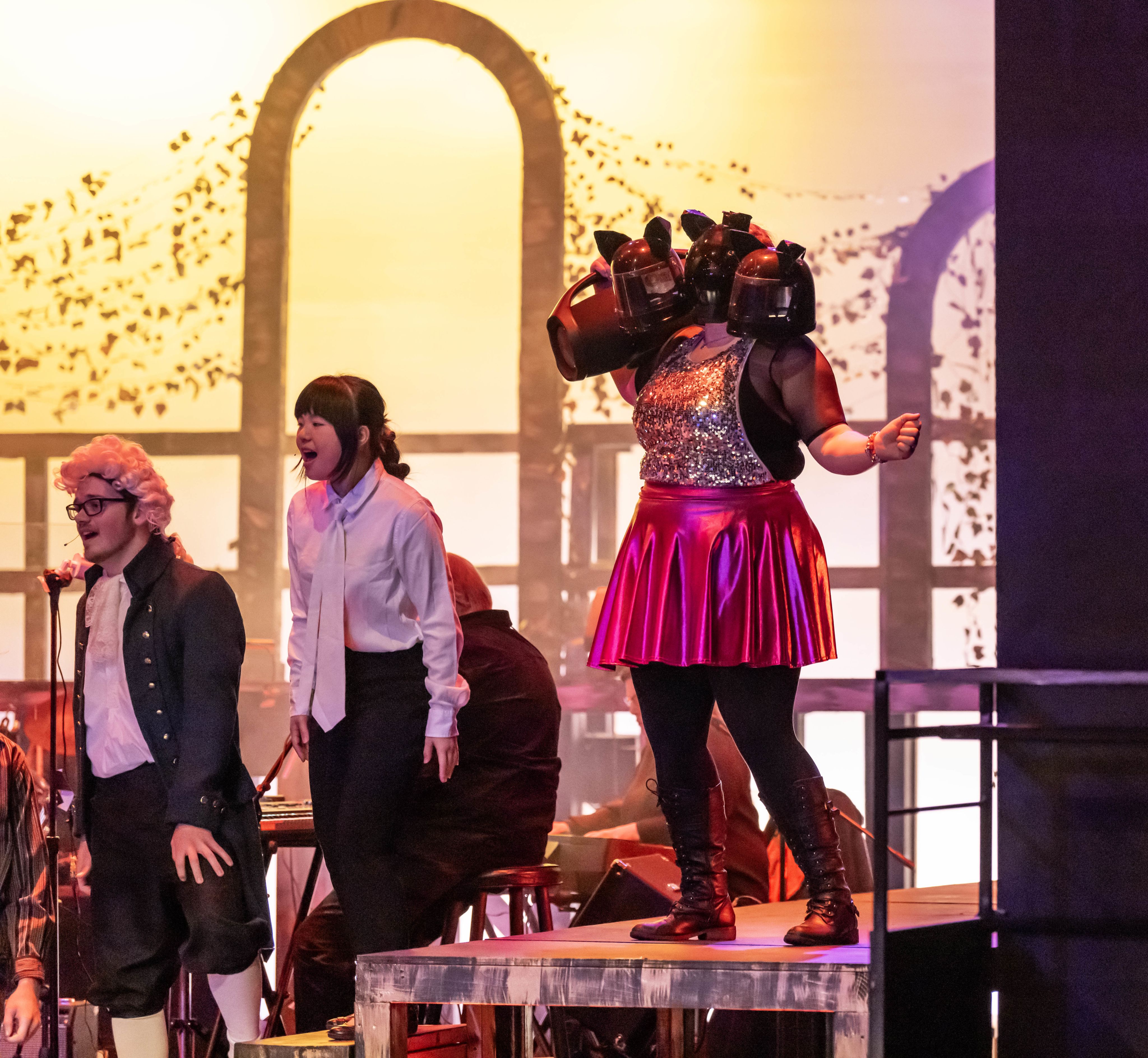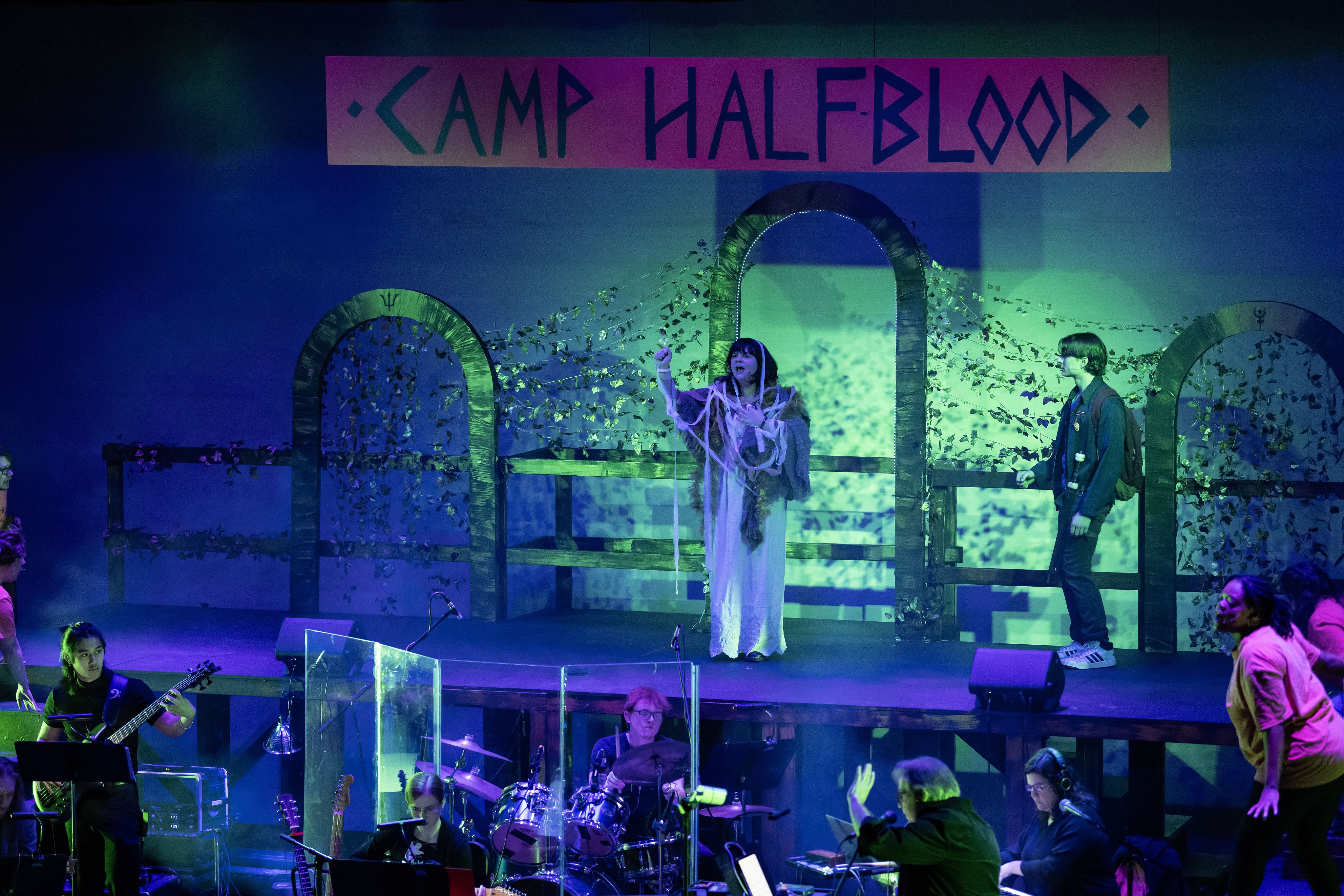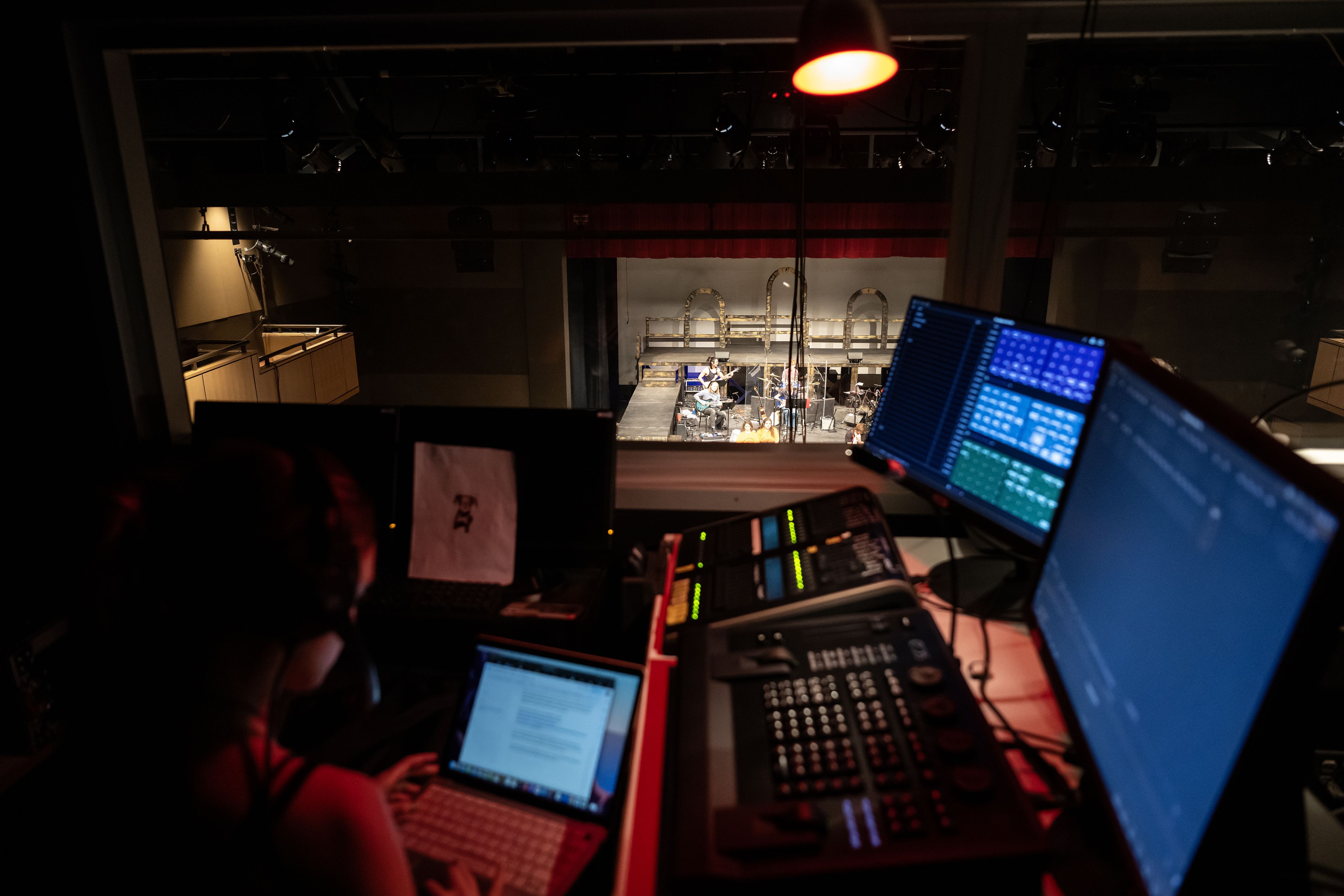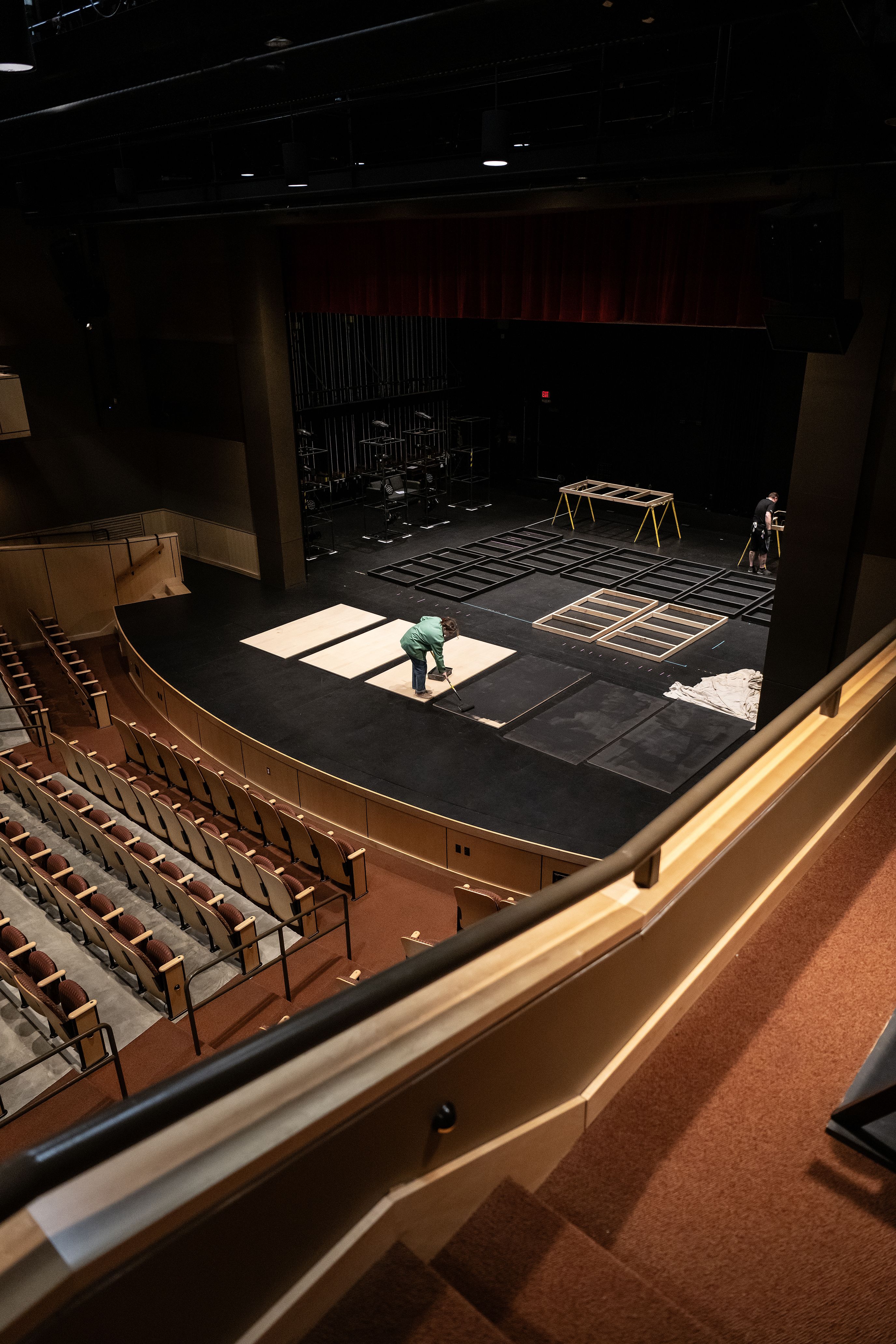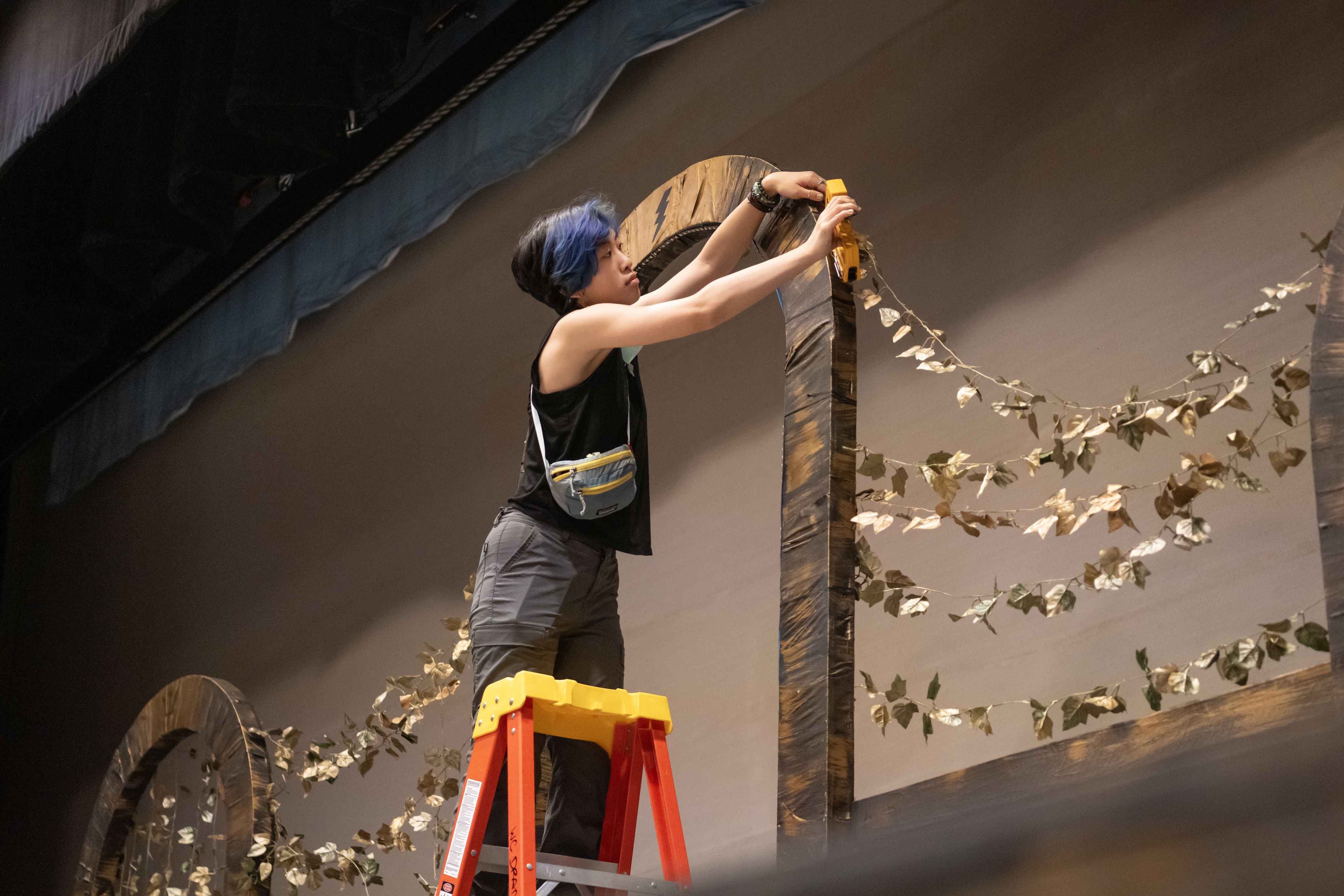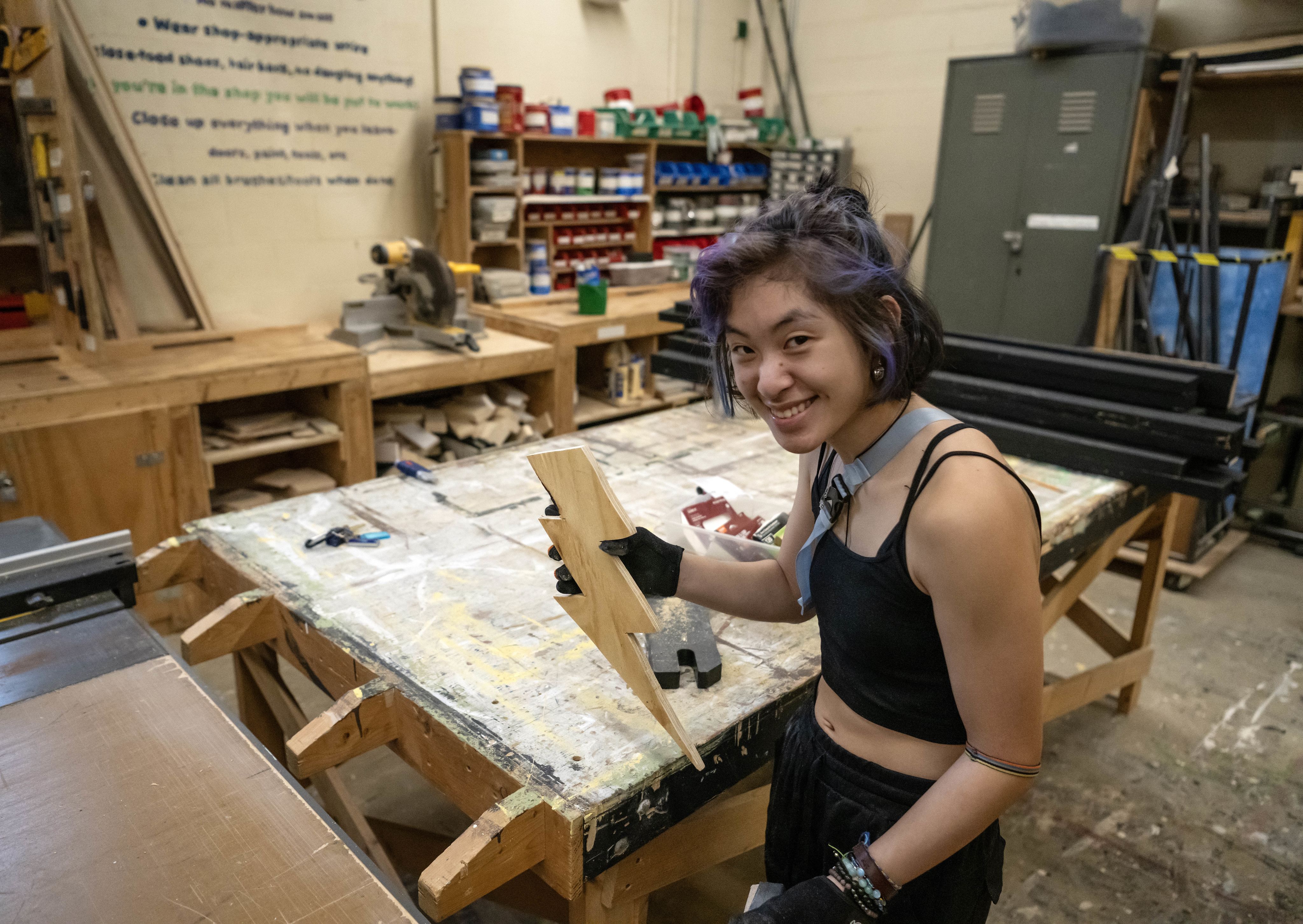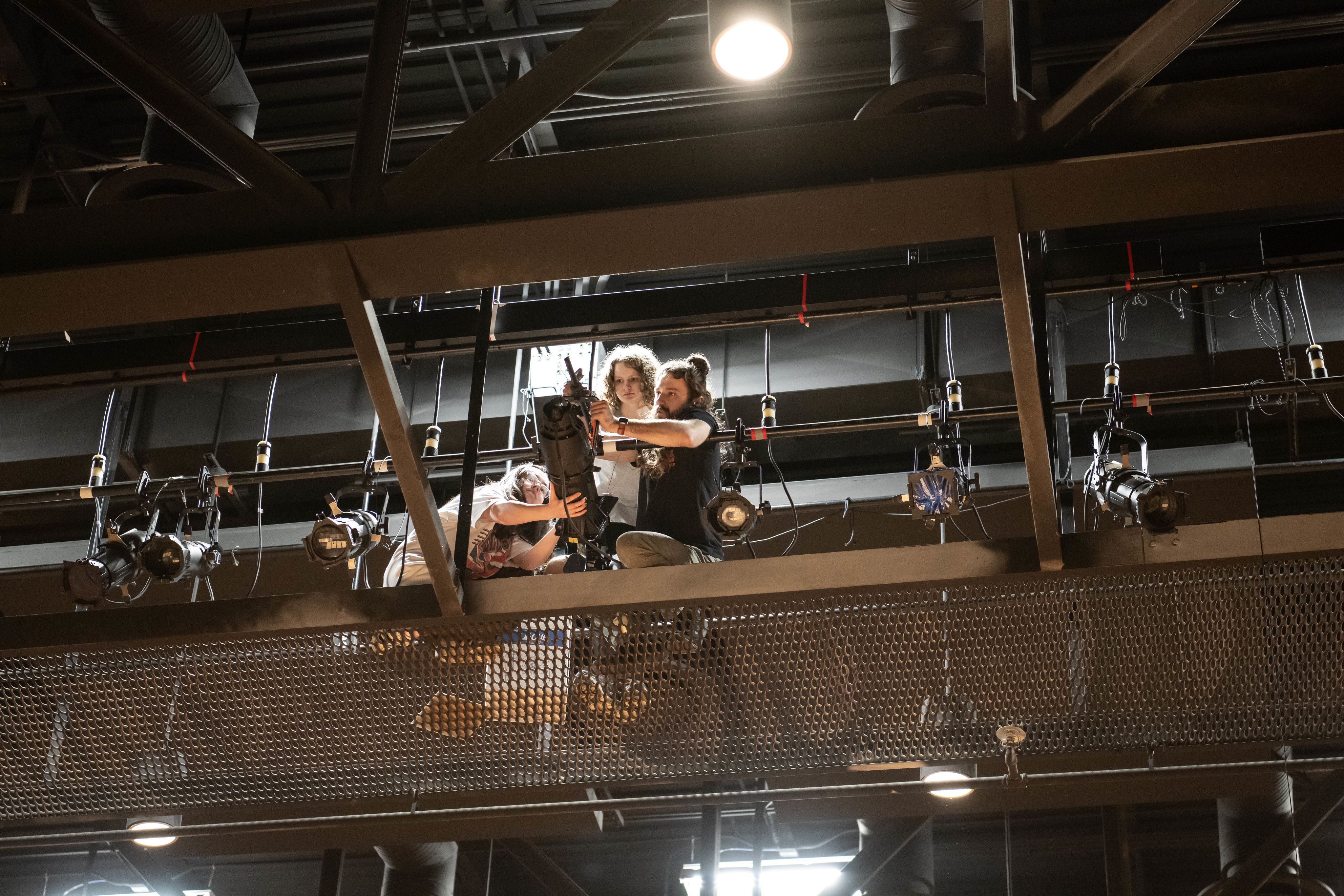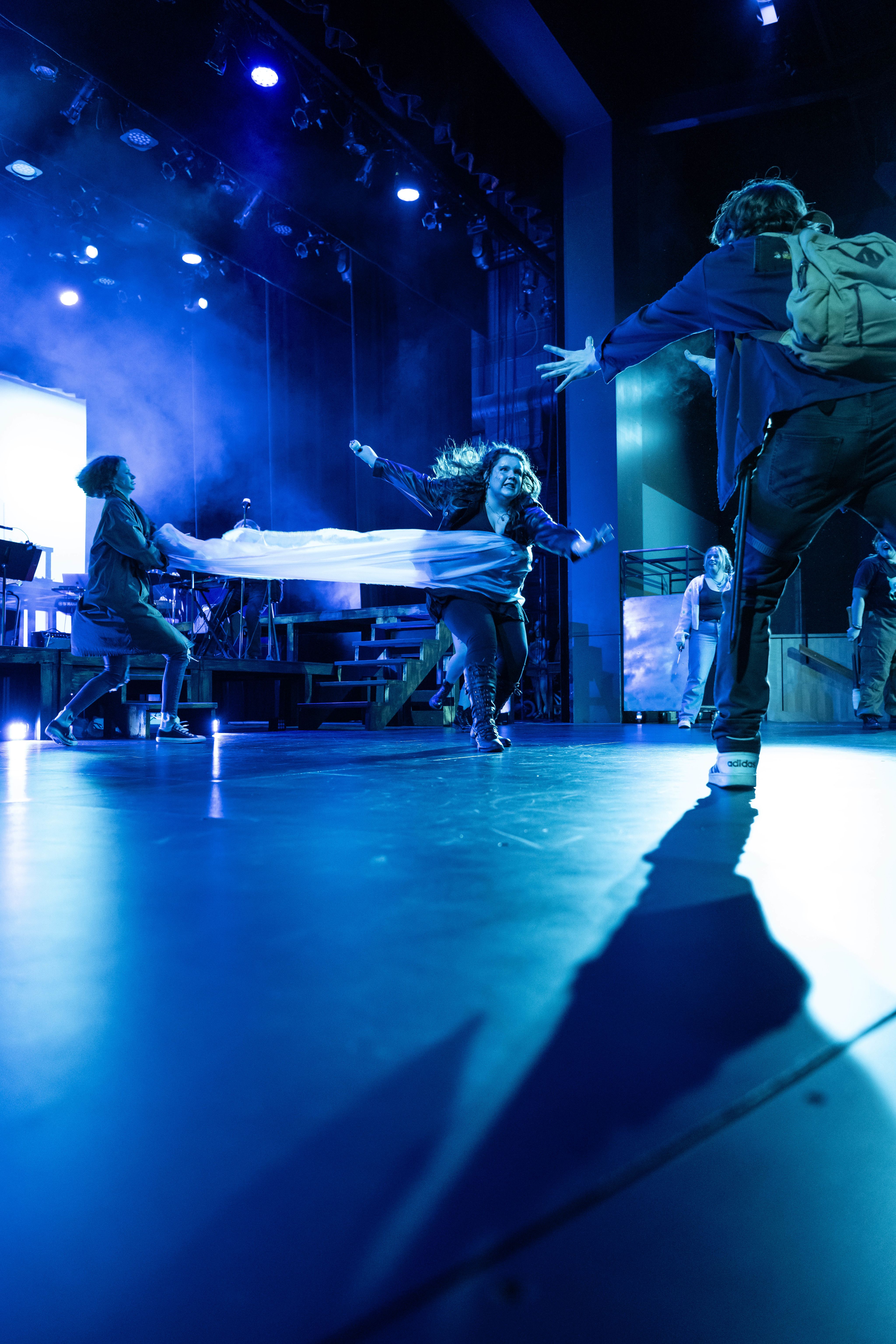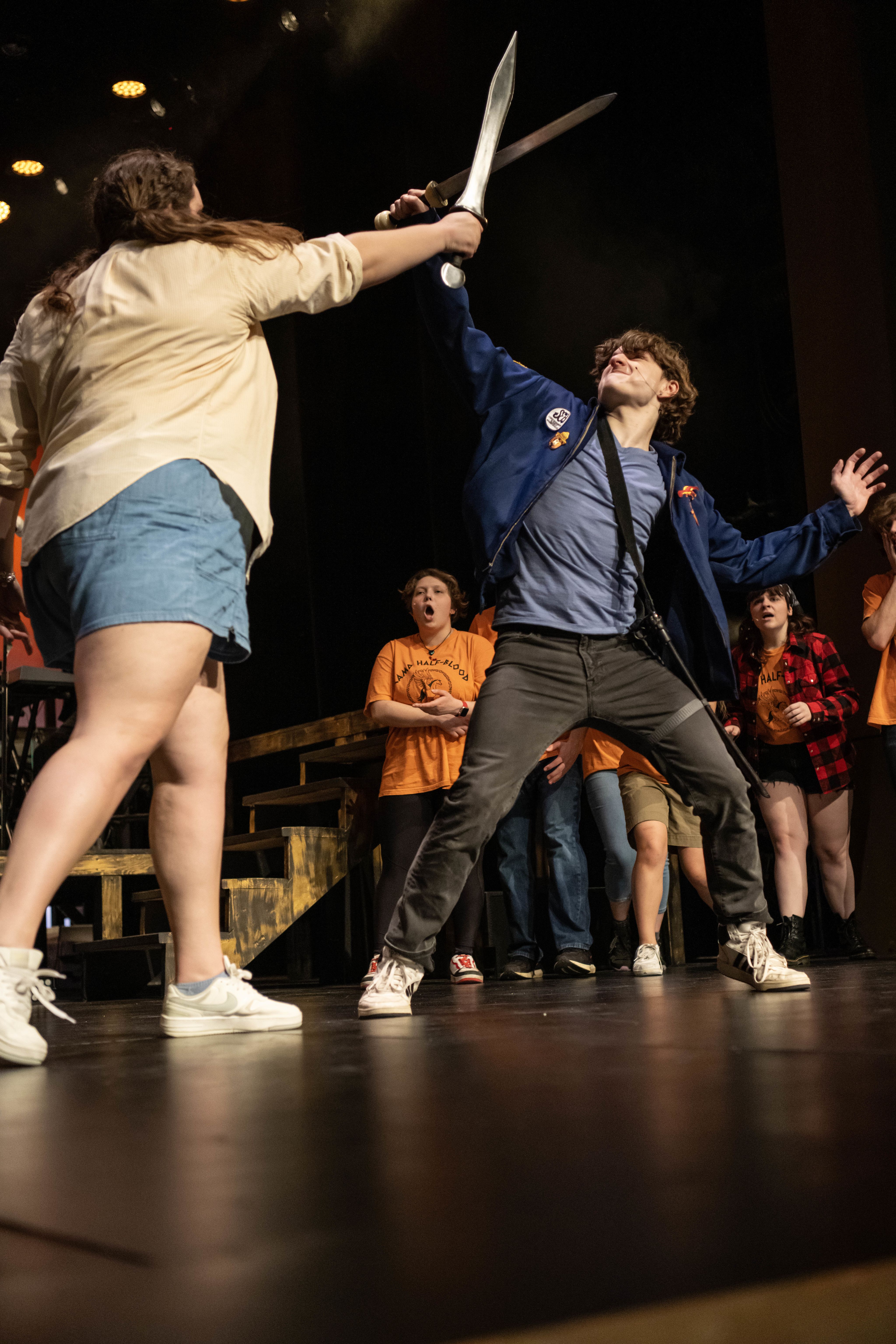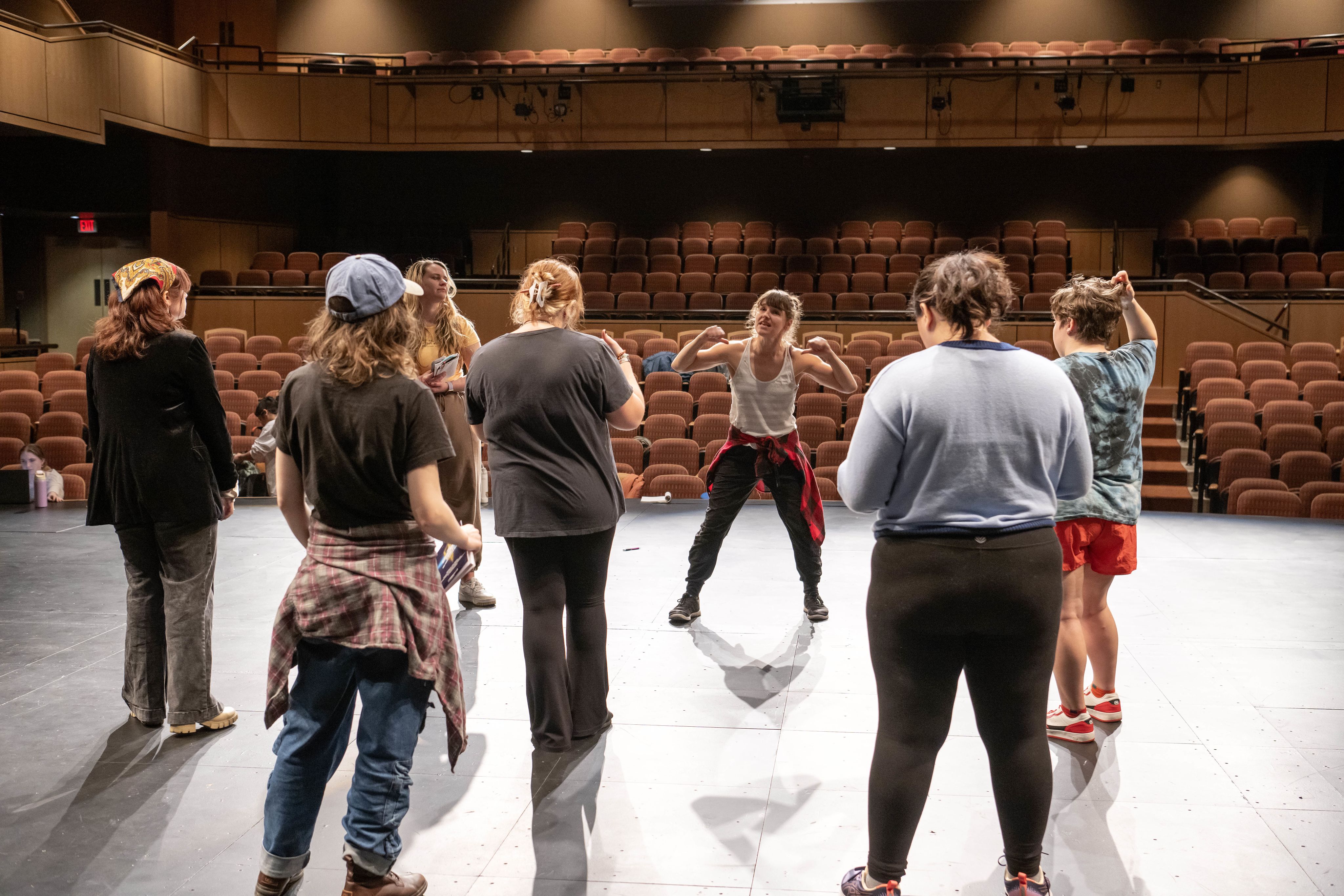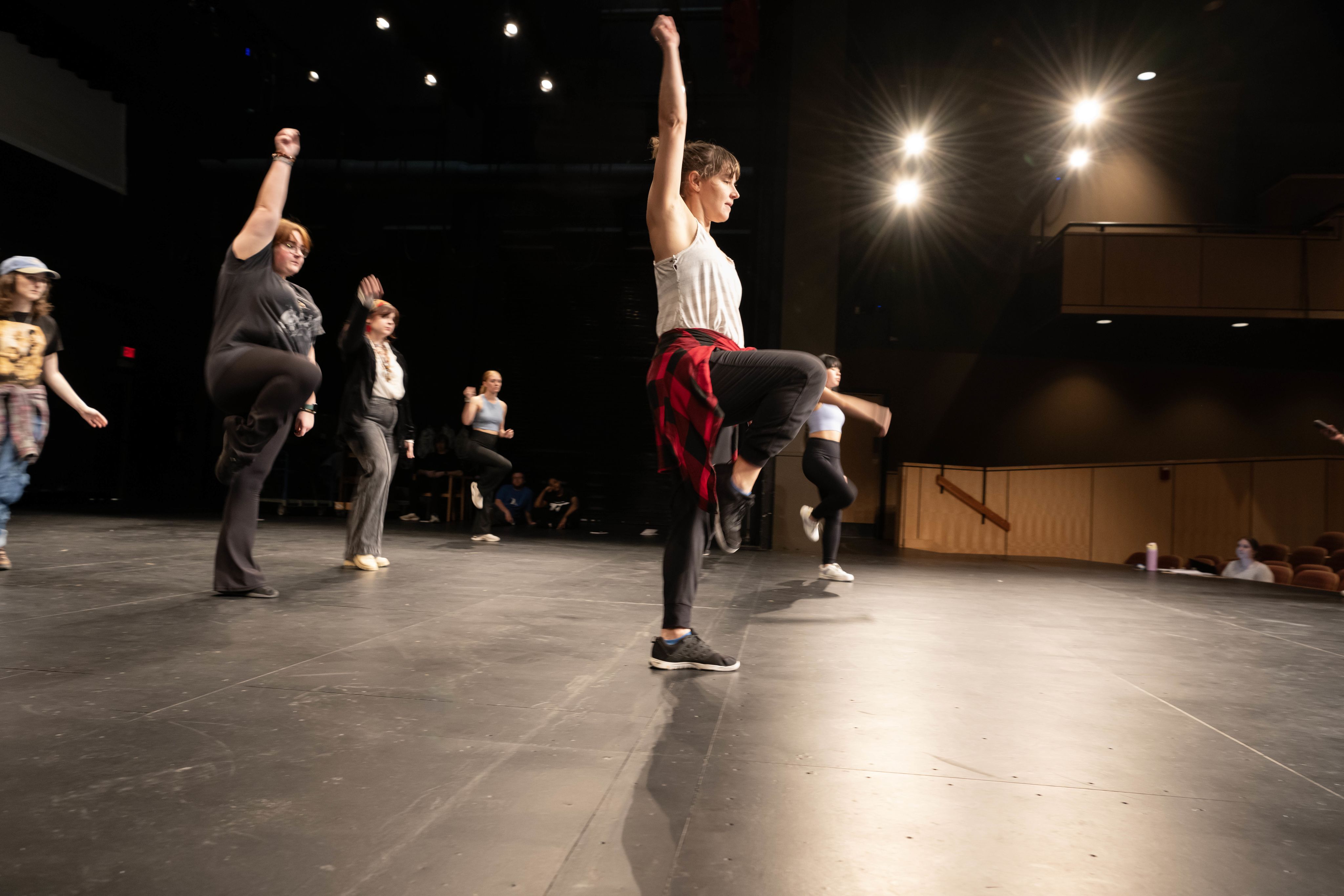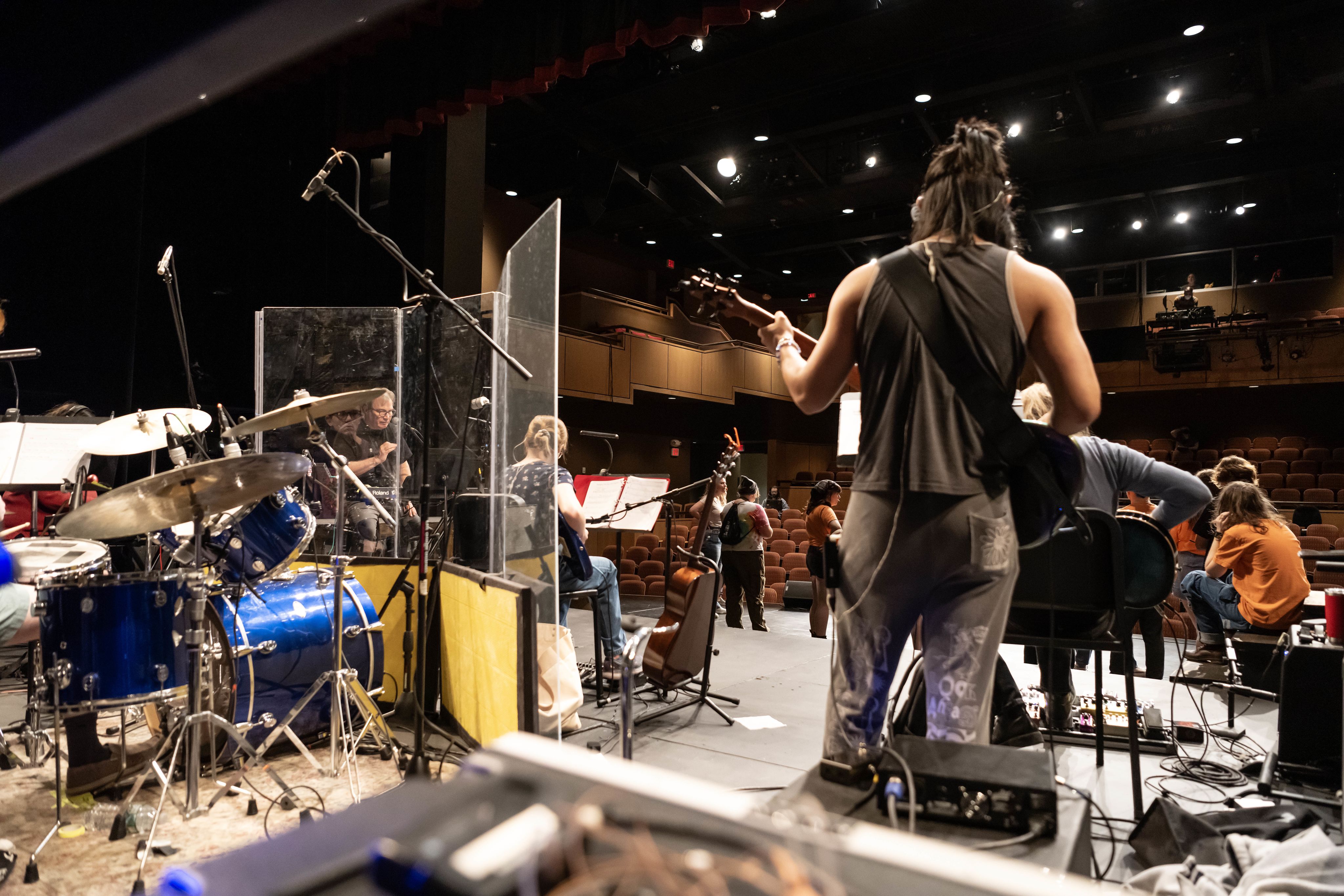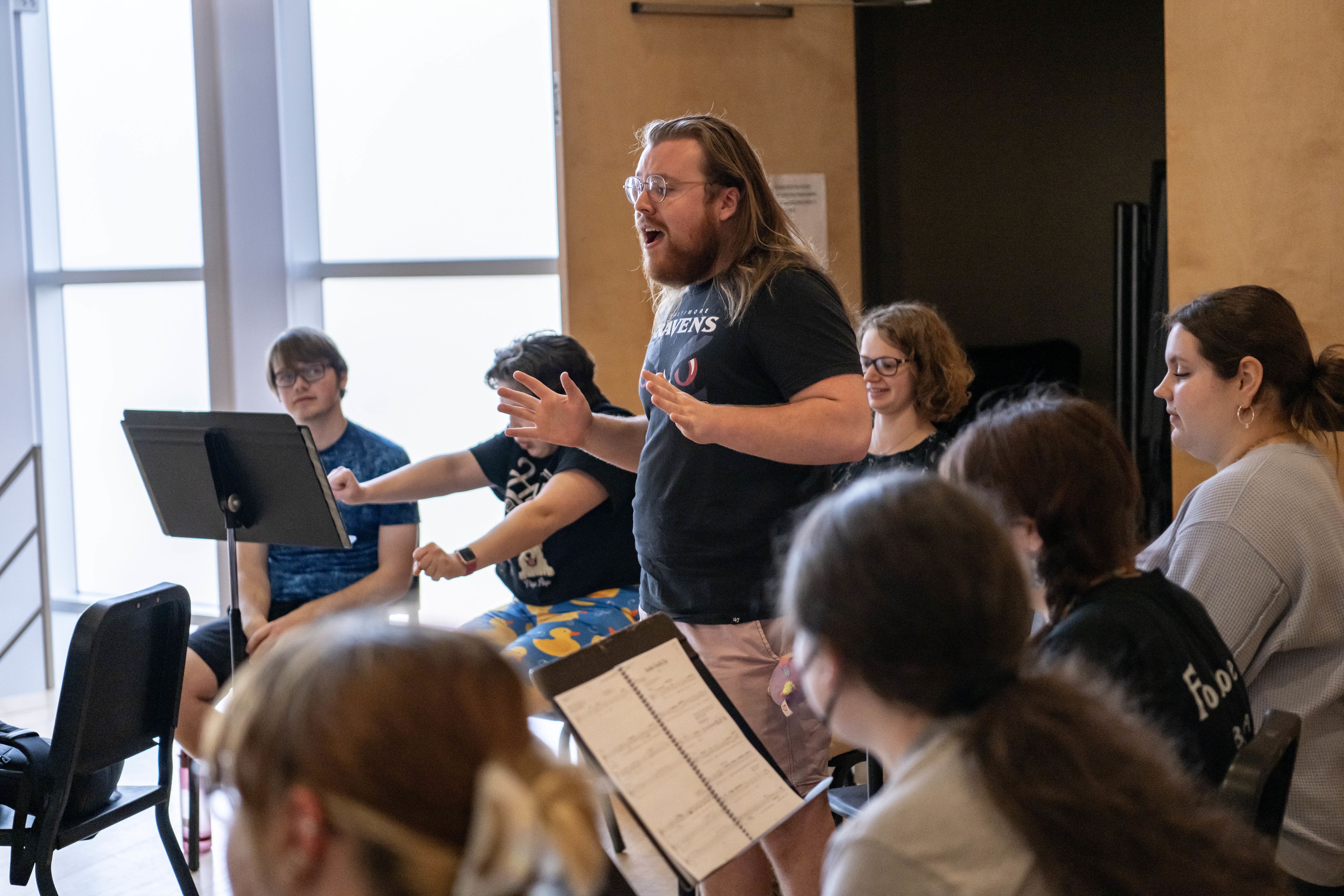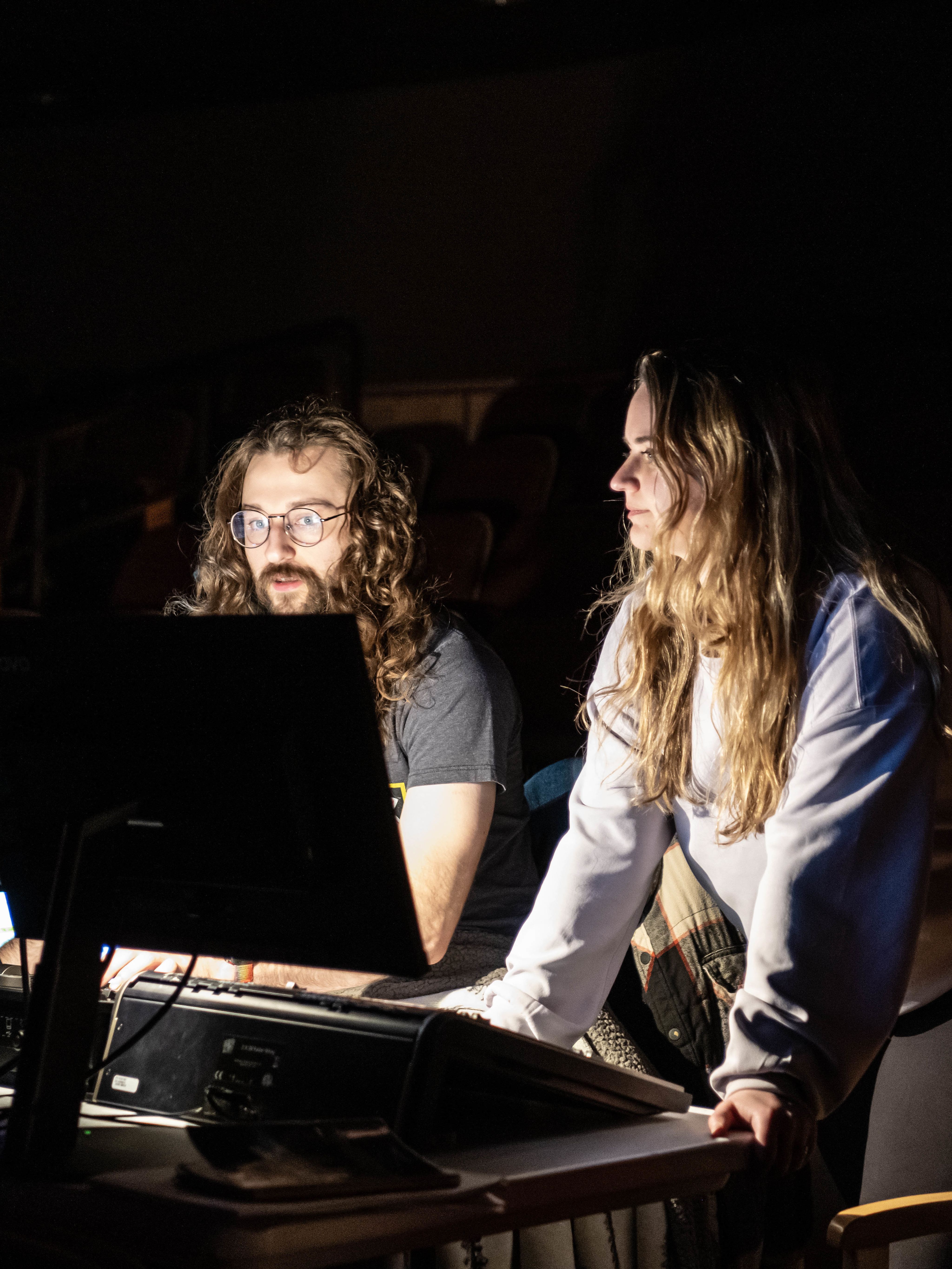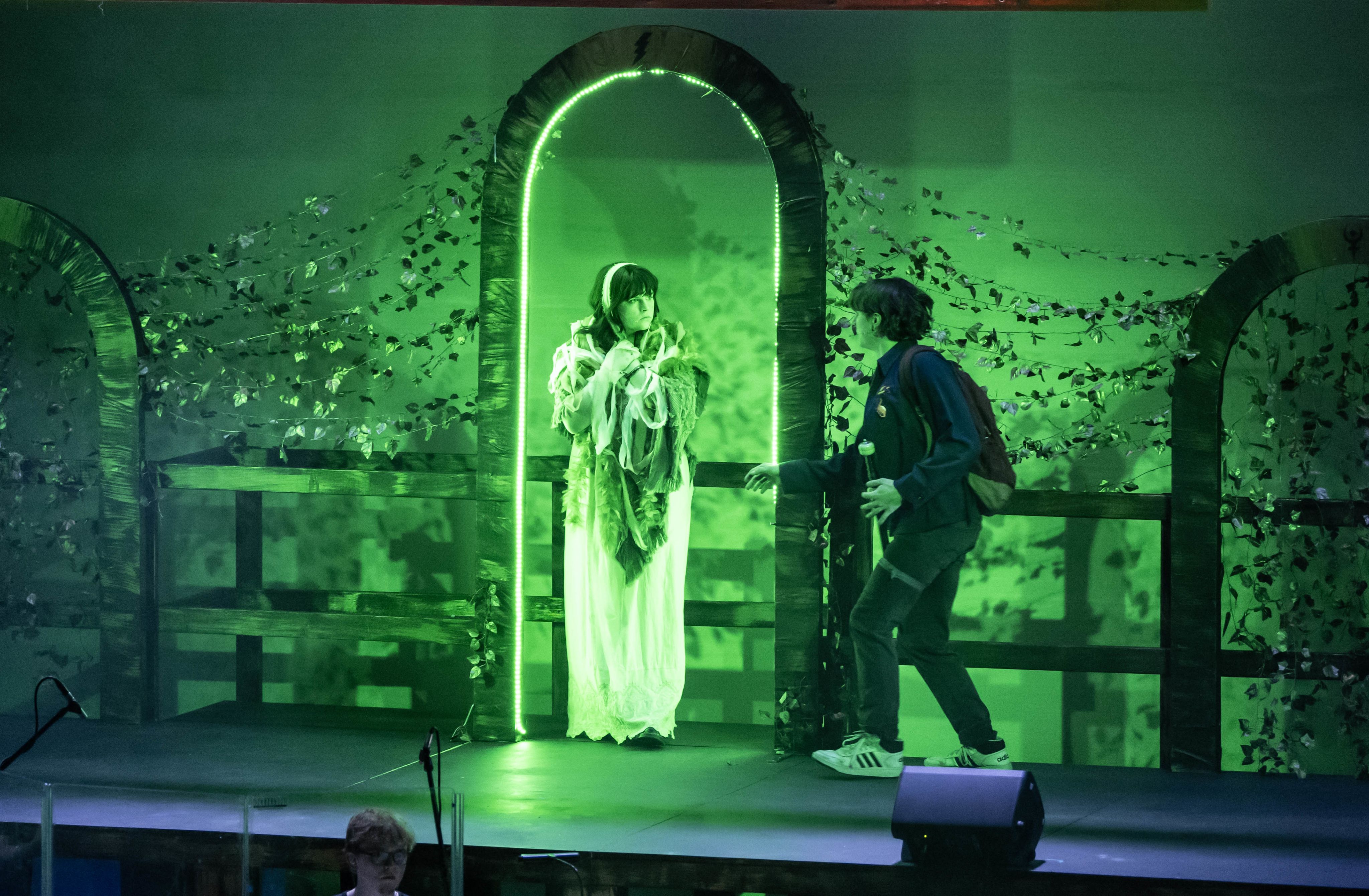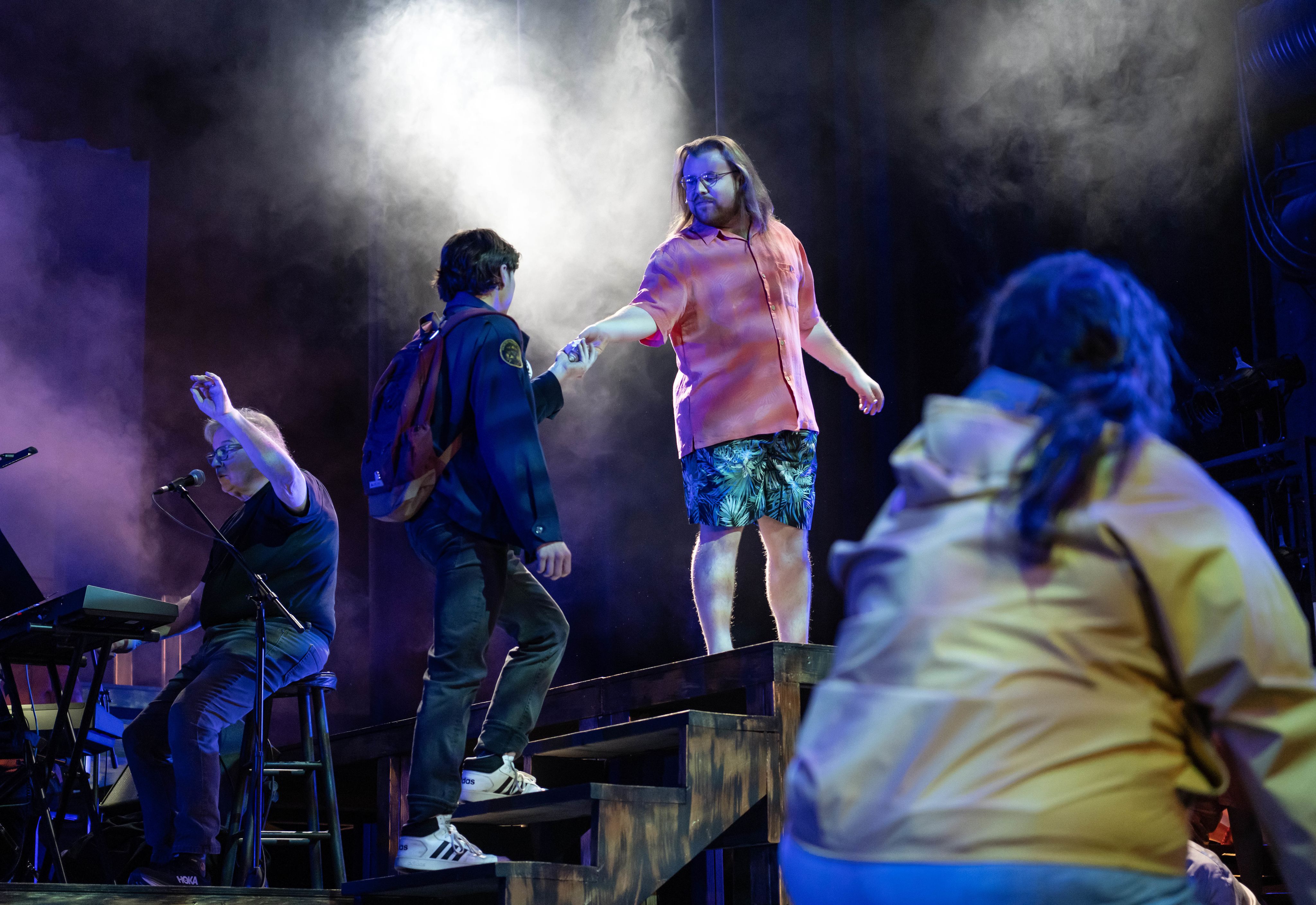The
Lightning Thief
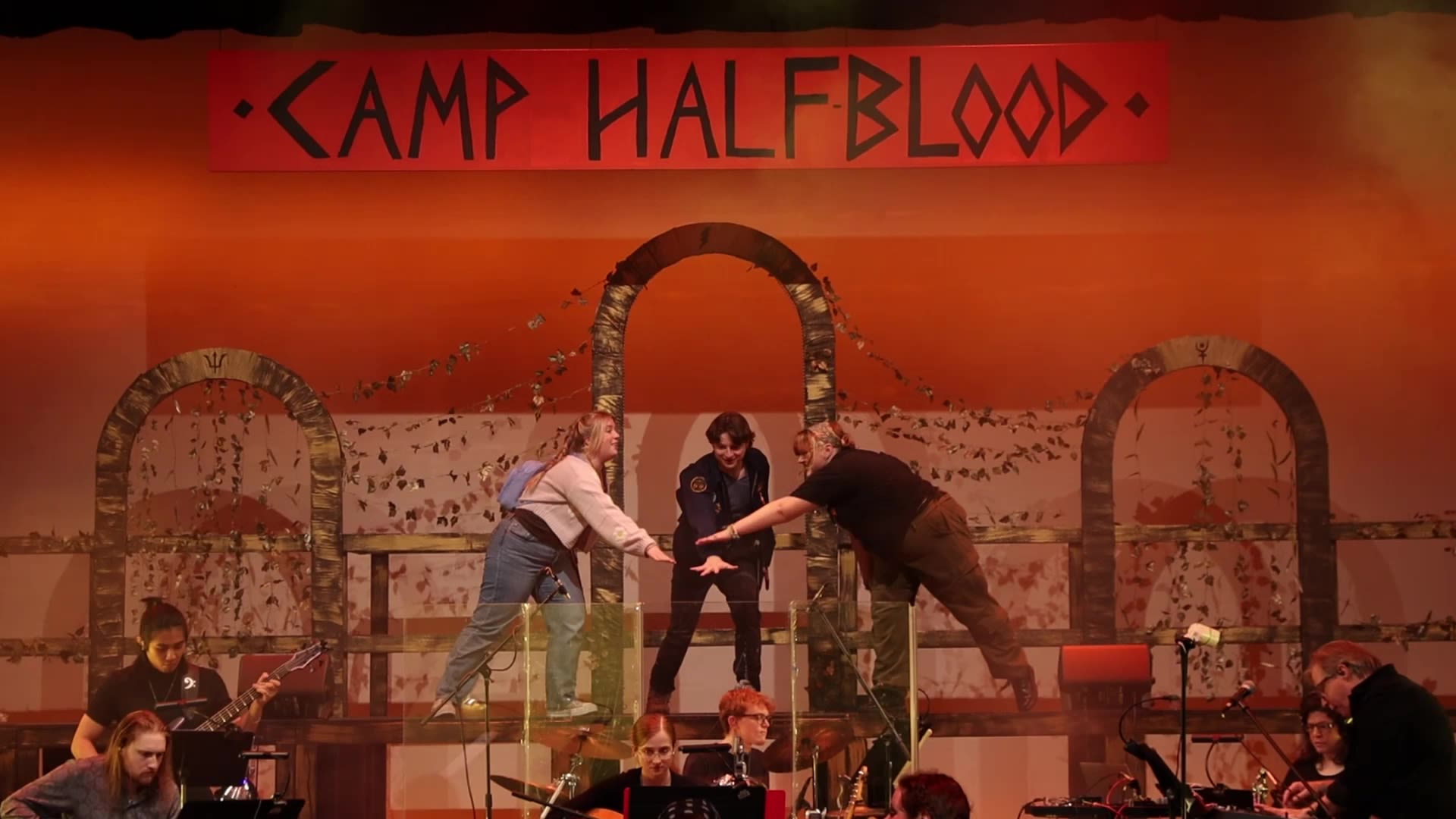
Washington College’s Department of Theatre & Dance and Department of Music left the audience buzzing with their stunning production of The Lightning Thief: The Percy Jackson Musical, for which I served as director, with musical direction by J. Ernest Green, and a lighting design that Matthew Brader ’24 did for his Senior Capstone Experience (SCE).
The Lightning Thief follows 11-year-old Percy Jackson as he discovers he is a demigod, is accused of stealing Zeus’ master lightning bolt, and embarks on a quest to save his mom while clearing his name. Along the way, he finds his purpose in the world and discovers a community of other demigods who embrace his uniqueness.
If finding community was a central theme on stage, creating a working and supporting community of actors, musicians, producers, directors, stagehands, and technicians was important to the success of this production offstage as well. Many disciplines had to collaborate cohesively to bring this complex story to life. More than 30 students and 10 faculty and staff members made up the full company across the cast, band, and creative and production teams.
Team bonding was critical to our process, especially for a company of this size to cohere. One of my philosophies as a director is that the stronger the team understands and trusts each other, the more effectively we’ll be able to try new things creatively, problem-solve difficult situations, and adapt on the fly.
Once a performance starts, the show doesn’t stop—yet anything can happen on stage, and the team has to be able to handle it and roll with it. For that to work under the pressure of a live performance, each person needs to know that everyone around them has their back. That requires a high level of trust and support. It was important to me to create this type of environment and to place a strong emphasis on building a supportive community from our very first rehearsal.
The campus also rallied around the production, including the Office of Student Engagement, which hosted a Greek gods-themed trivia night leading up to opening night. A total of 950 patrons attended across the show’s run, with the final two performances sold out.
Planning a production as electric as The Lightning Thief spanned over a year and a half. Enjoy this sneak peak behind the scenes as we revisit a few of our favorite moments from meetings, rehearsals, work calls, and performances.
Washington College’s Department of Theatre & Dance and Department of Music left the audience buzzing with their stunning production of The Lightning Thief: The Percy Jackson Musical, for which I served as director, with musical direction by J. Ernest Green, and a lighting design that Matthew Brader ’24 did for his Senior Capstone Experience (SCE).
The Lightning Thief follows 11-year-old Percy Jackson as he discovers he is a demigod, is accused of stealing Zeus’ master lightning bolt, and embarks on a quest to save his mom while clearing his name. Along the way, he finds his purpose in the world and discovers a community of other demigods who embrace his uniqueness.
If finding community was a central theme on stage, creating a working and supporting community of actors, musicians, producers, directors, stagehands, and technicians was important to the success of this production offstage as well. Many disciplines had to collaborate cohesively to bring this complex story to life. More than 30 students and 10 faculty and staff members made up the full company across the cast, band, and creative and production teams.
Team bonding was critical to our process, especially for a company of this size to cohere. One of my philosophies as a director is that the stronger the team understands and trusts each other, the more effectively we’ll be able to try new things creatively, problem-solve difficult situations, and adapt on the fly.
Once a performance starts, the show doesn’t stop—yet anything can happen on stage, and the team has to be able to handle it and roll with it. For that to work under the pressure of a live performance, each person needs to know that everyone around them has their back. That requires a high level of trust and support. It was important to me to create this type of environment and to place a strong emphasis on building a supportive community from our very first rehearsal.
The campus also rallied around the production, including the Office of Student Engagement, which hosted a Greek gods-themed trivia night leading up to opening night. A total of 950 patrons attended across the show’s run, with the final two performances sold out.
Planning a production as electric as The Lightning Thief spanned over a year and a half. Enjoy this sneak peak behind the scenes as we revisit a few of our favorite moments from meetings, rehearsals, work calls, and performances.
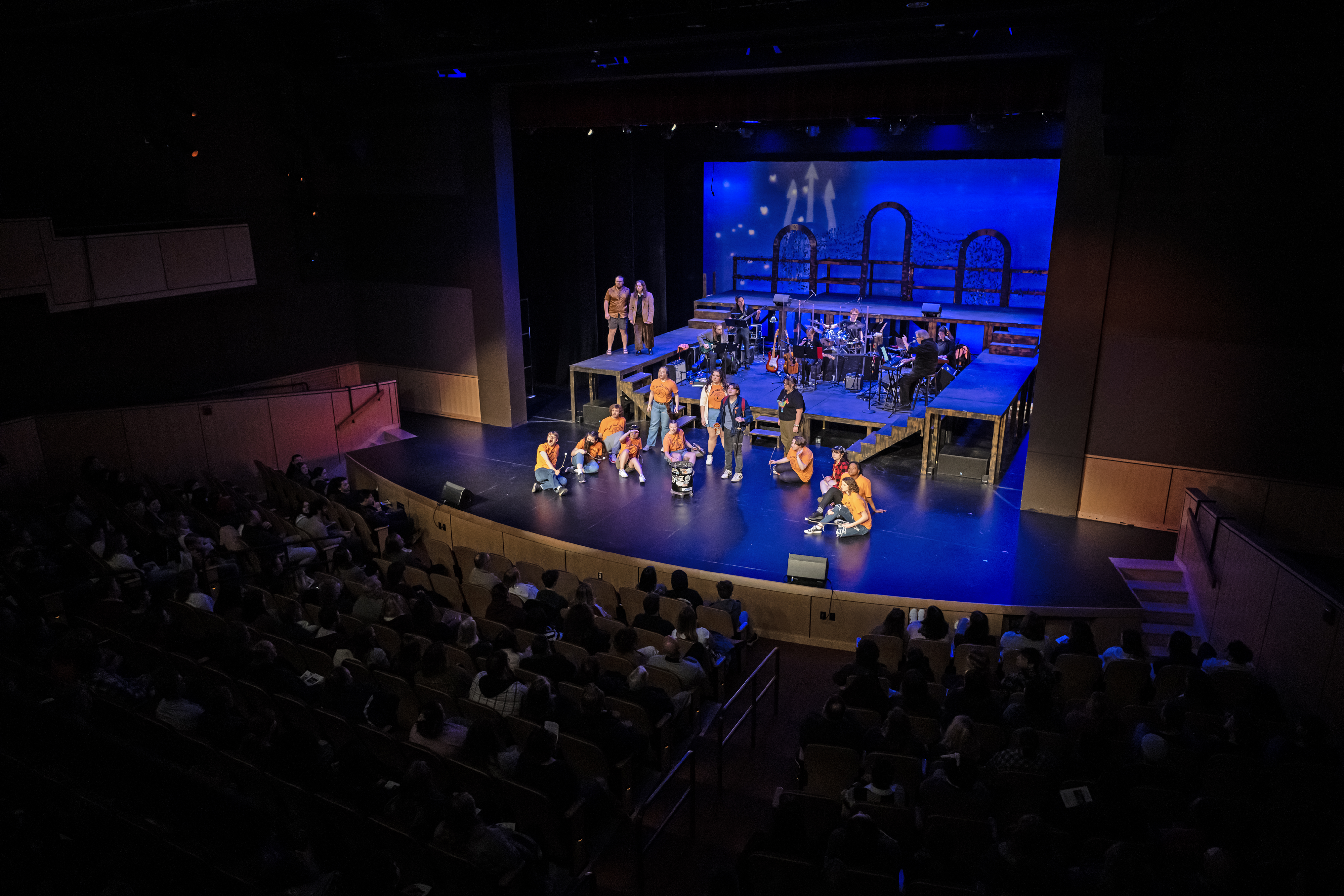
Costumes and Hair
Costume designers Ryan Morrow ’25 and Sophie Foster ’24 and hair and makeup designer Liv Barry ’24 created a cohesive look for 34+ characters while also bringing mythological creatures to life (Bottom row in order: Zach Gottemoller ’27 as Minotaur, Stevie Lyles ’26 as Squirrel, and Maddi Mulder ’25 as DJ Cerverus).
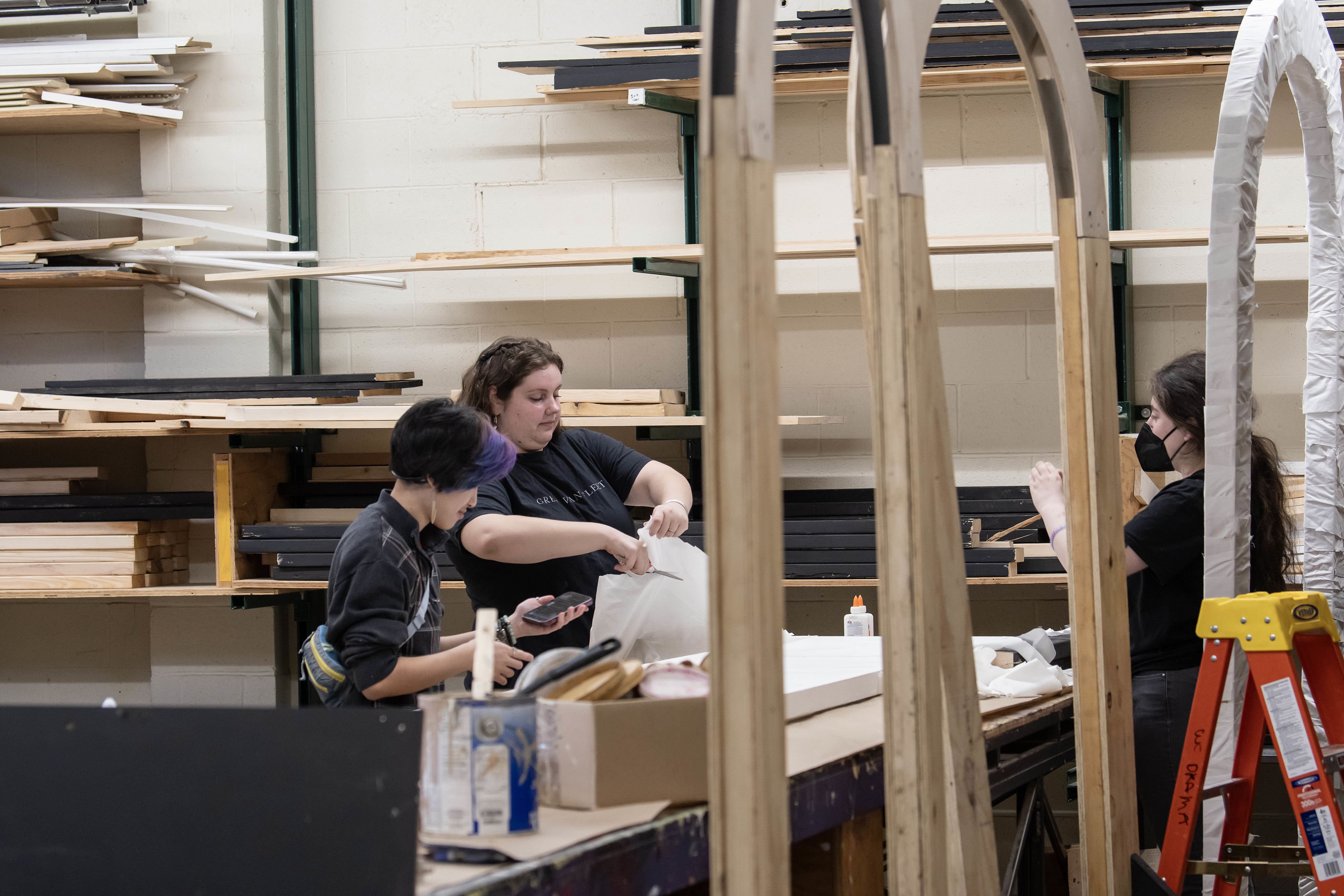
Set Design
Hannah Choi ’26 designed a multilevel set that required 21 platforms. The set explored the complicated relationship between the demigods and their god parents by layering overgrown and wild elements of nature over a NYC-industrial-inspired backdrop.
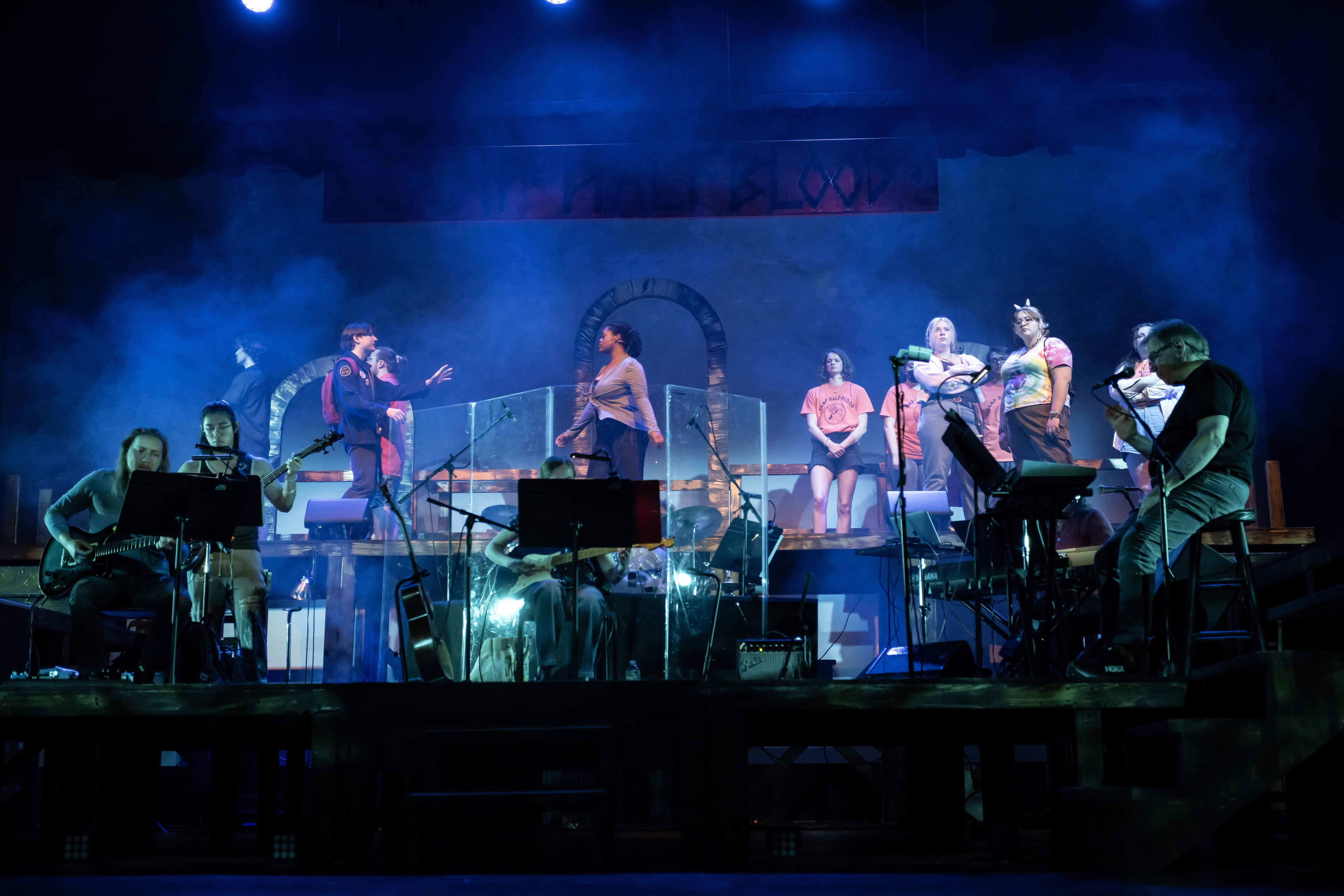
Props
Props manager Leah Thivierge ’24 procured or made a variety of familiar and emblematic objects that grounded the audience in the story’s reality. From tricycles and swords to food and campfires, the props allowed the actors to feel confident in their actions and embrace the magic and whimsy of the world.
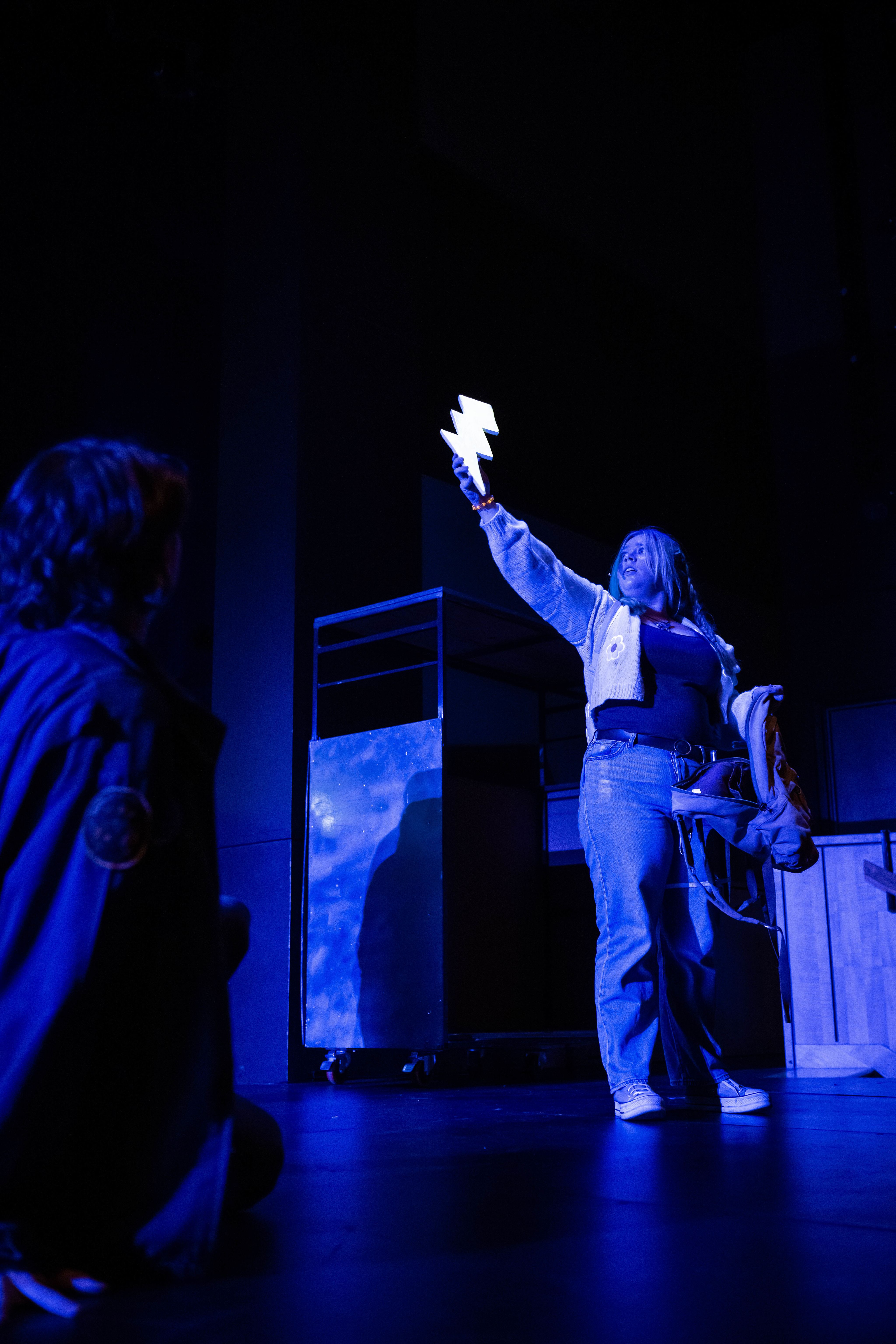
Movement
Actors worked closely with director Abbey Wark ’18 and choreographer Renee Gerardo (bottom middle) on character work, staging, and choreography to bring each unique role to life and add kinetic storytelling to the already dynamic sets and lighting.
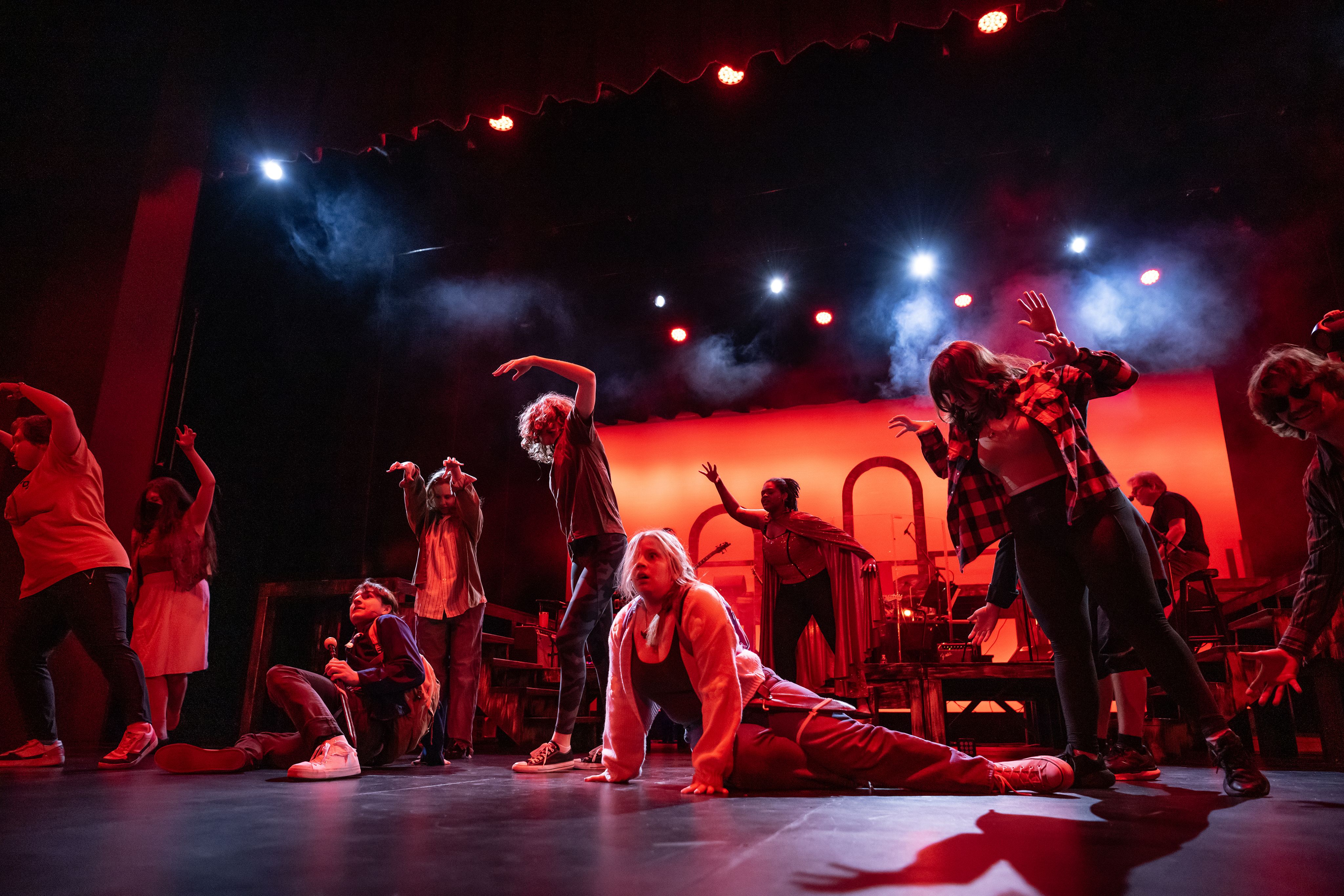
Music
Actors and band members worked with music director J. Ernest Green and pit band director Alec Green on connecting with the music, hitting their notes, and nailing timing to seamlessly capture the tone of each moment.
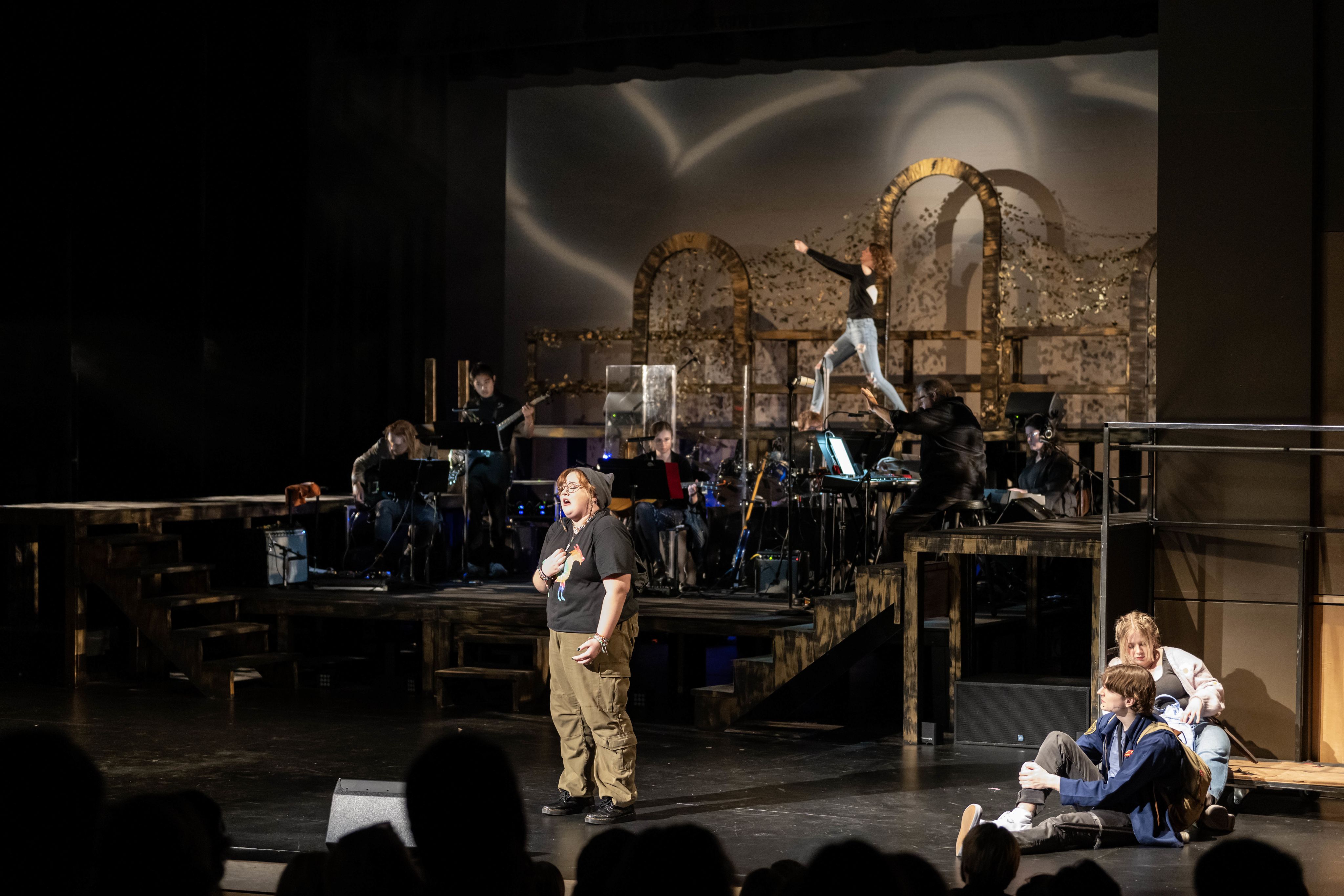
Lighting Master
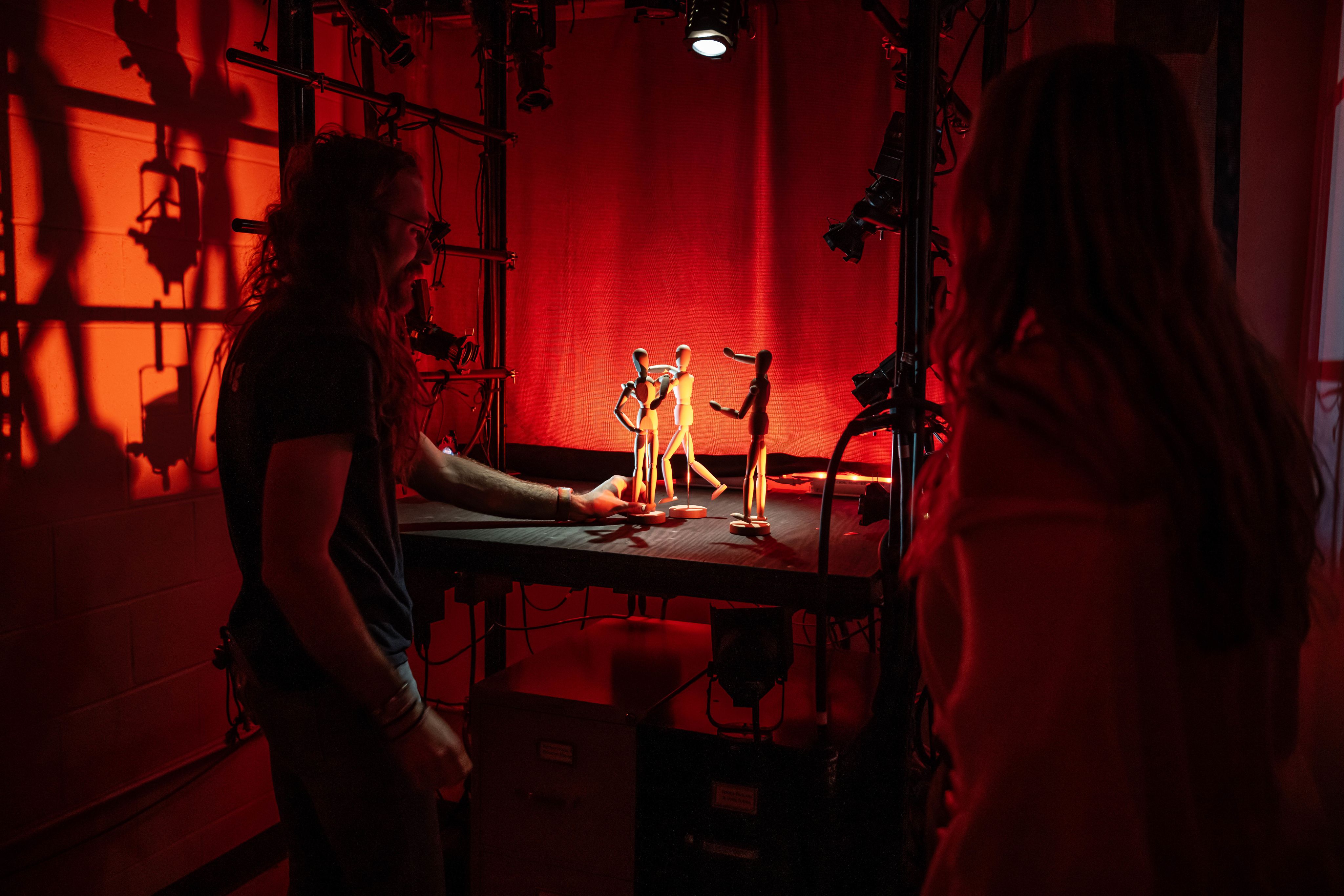
Lighting designer Matthew Brader ’24 used lights to establish the tone and location throughout the story. Lights were also a vital part in the storytelling for many of the magical moments, such as making a lightning bolt glow, projecting a cyclops on stage, and creating a tidal wave.
As the lighting, video, and audio shop manager for the Department of Theatre and Dance, Brader designed lights on a variety of productions, but his first solo lighting design was for a performance Senior Capstone Experience (SCE) of Jane Eyre in fall 2022. Brader’s design required the use of dance lighting towers, nearlyevery light available in Decker Theatre, and access to the Genie lift to install them.
“That was the first time I was like, ‘Okay, my professors really do believe in this, and I can really explore whatever I want here,’” Brader said. “A large part of my experience in the department was finding that sense of community within everyone and having that group of people who seemy big ideas and are like, ‘Alright, let’s do it.’” Brader’s big ideas grew even larger when the Gibson Center for the Arts installed LED lights in Decker Theatre, a project the theatre department made sure to have completed in time for Brader to execute his SCEdesign because LEDs are rapidly becoming the new industry standard.
“This version of The Lightning Thief: The Percy Jackson Musical was exactly how I wanted it to be. I am immensely happy with the outcome because of the LEDs,” Brader said. “Having access to so many lights in various instruments, sizes, and power to put everywhere made the design experience so much more professional. The speed at which the lights change in color and intensity is only possible with LEDs. Moments like the big flashing effects and each song having its own distinct look were only possible with LEDs. I do not think it could have happened at any other place or school, and I could not be happier or prouder of everyone who worked on the production. It was the dream team.”

